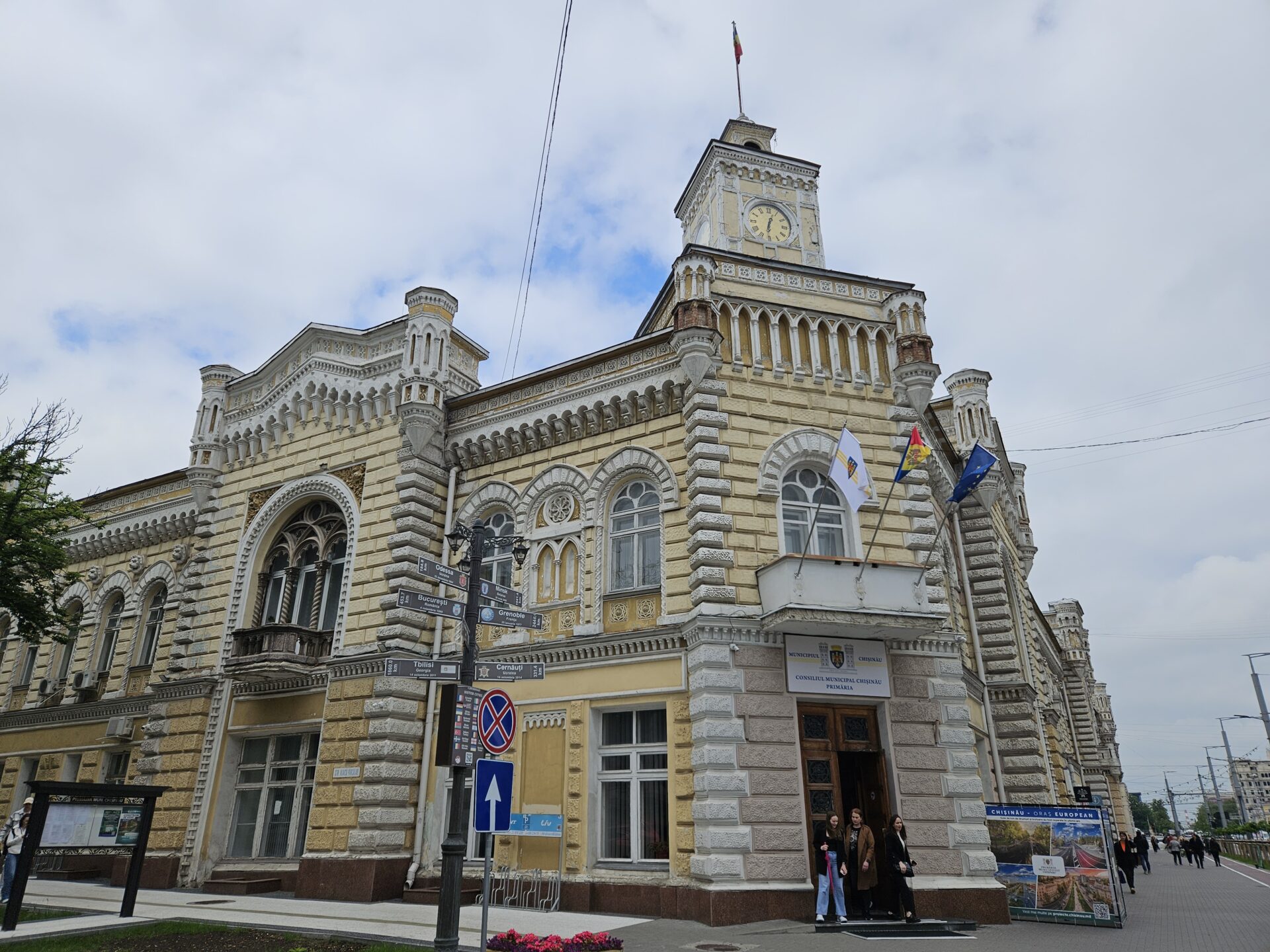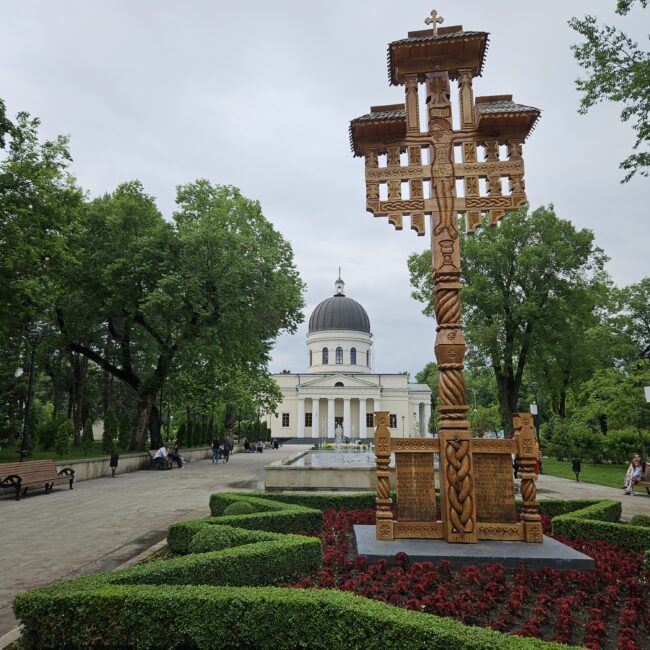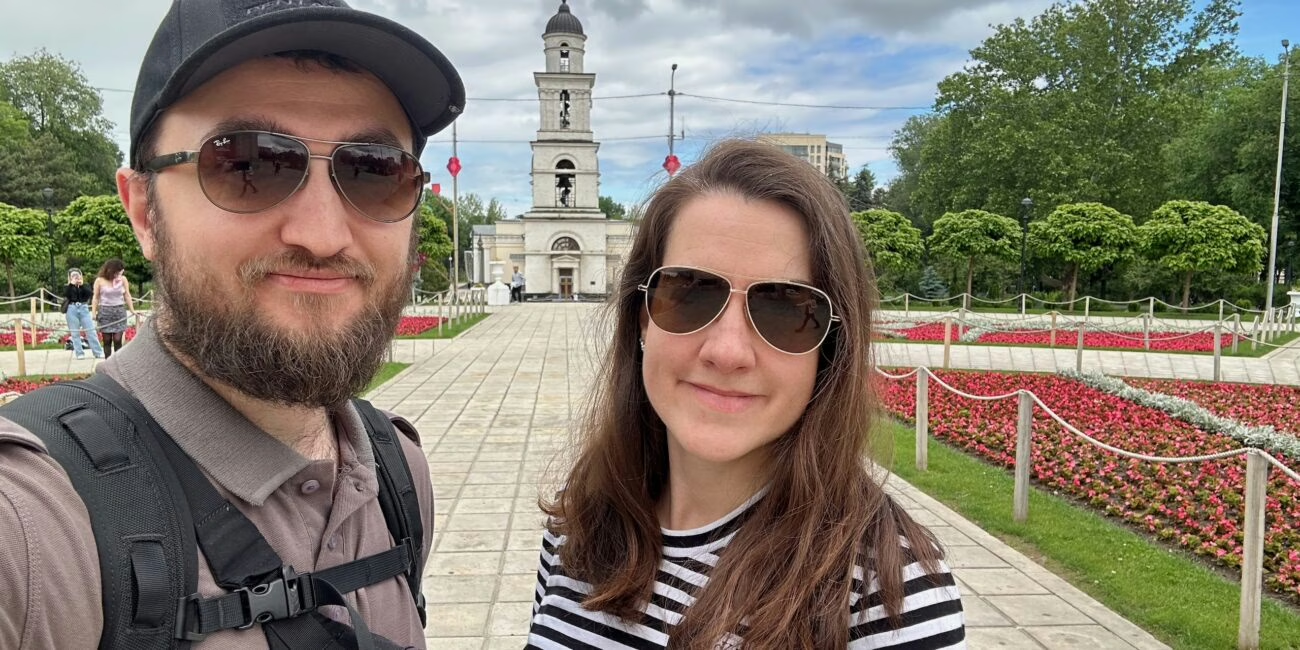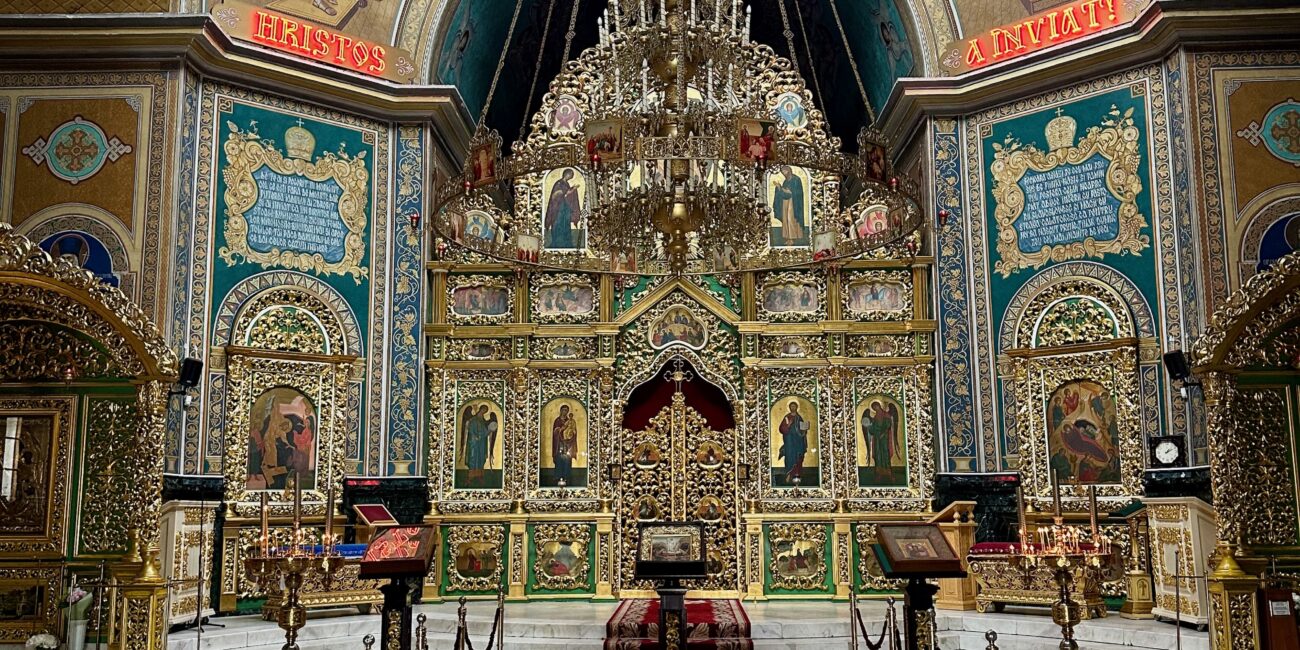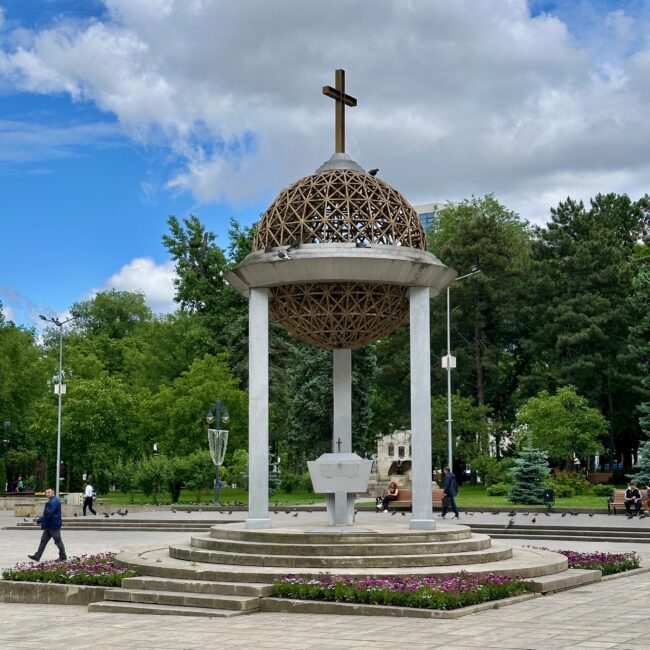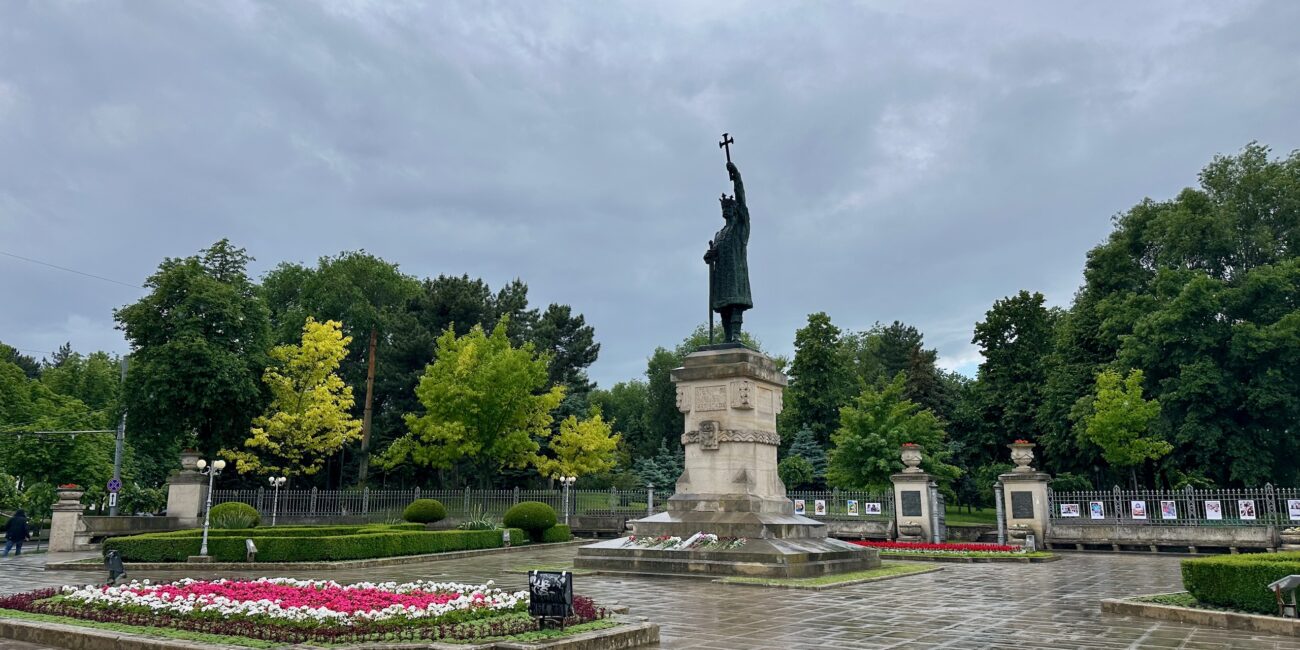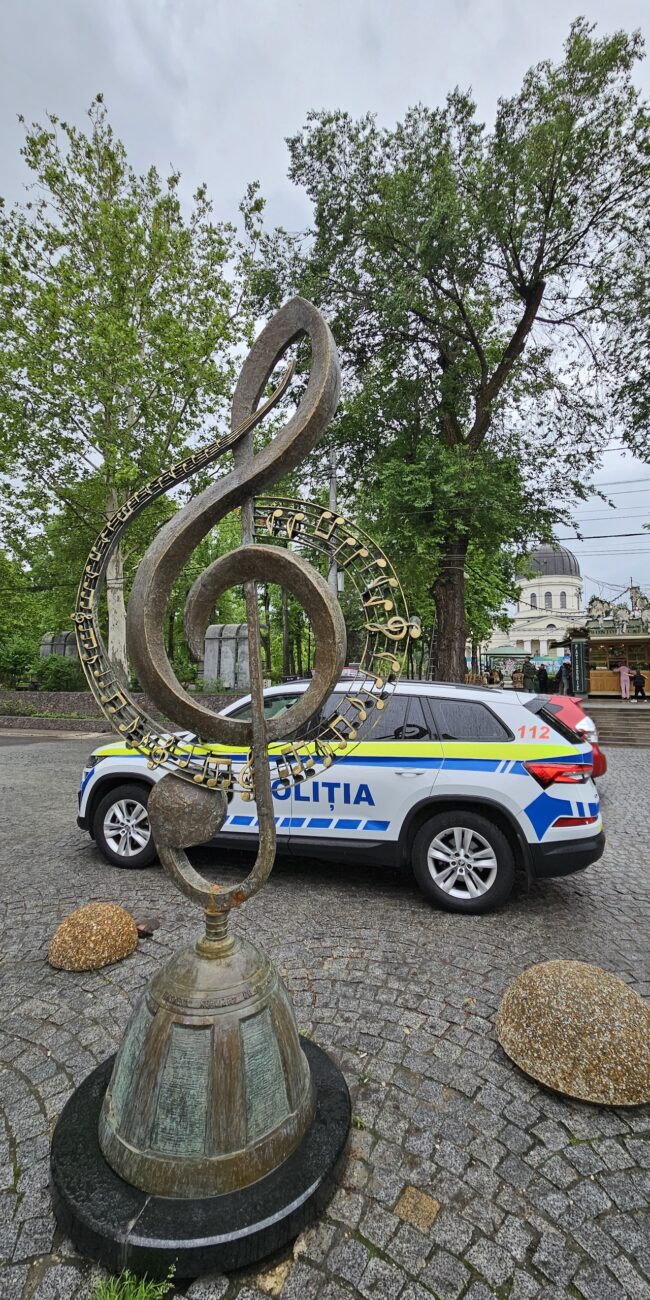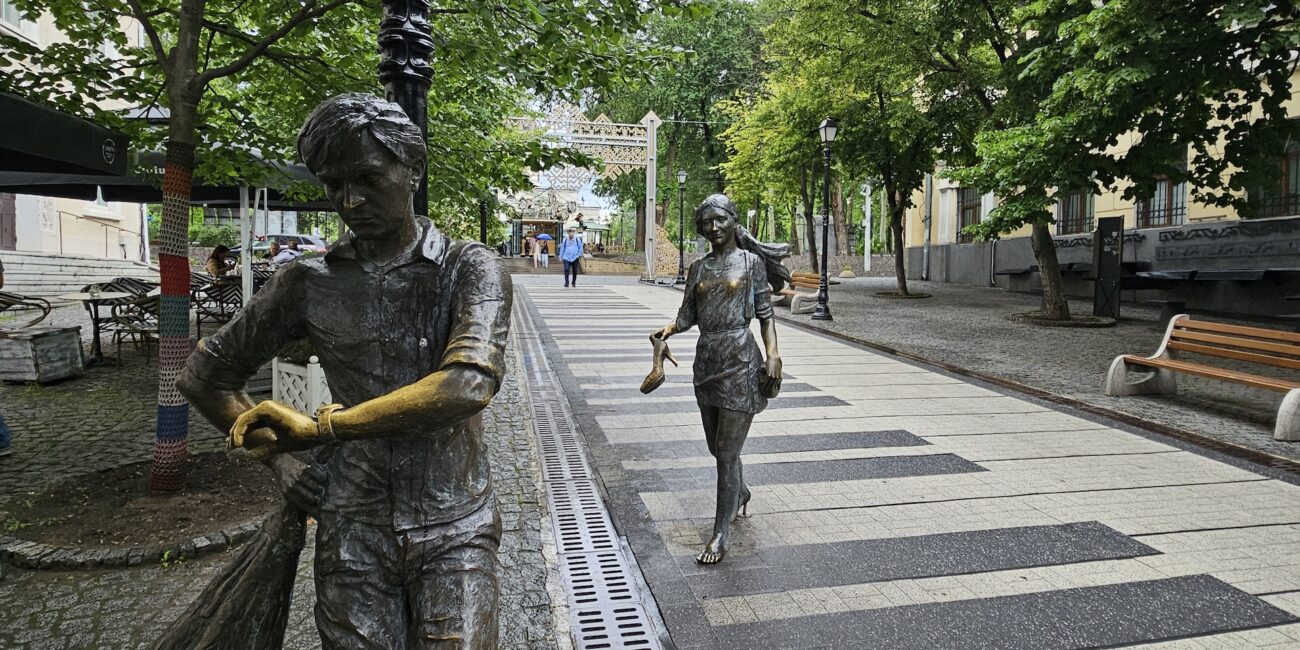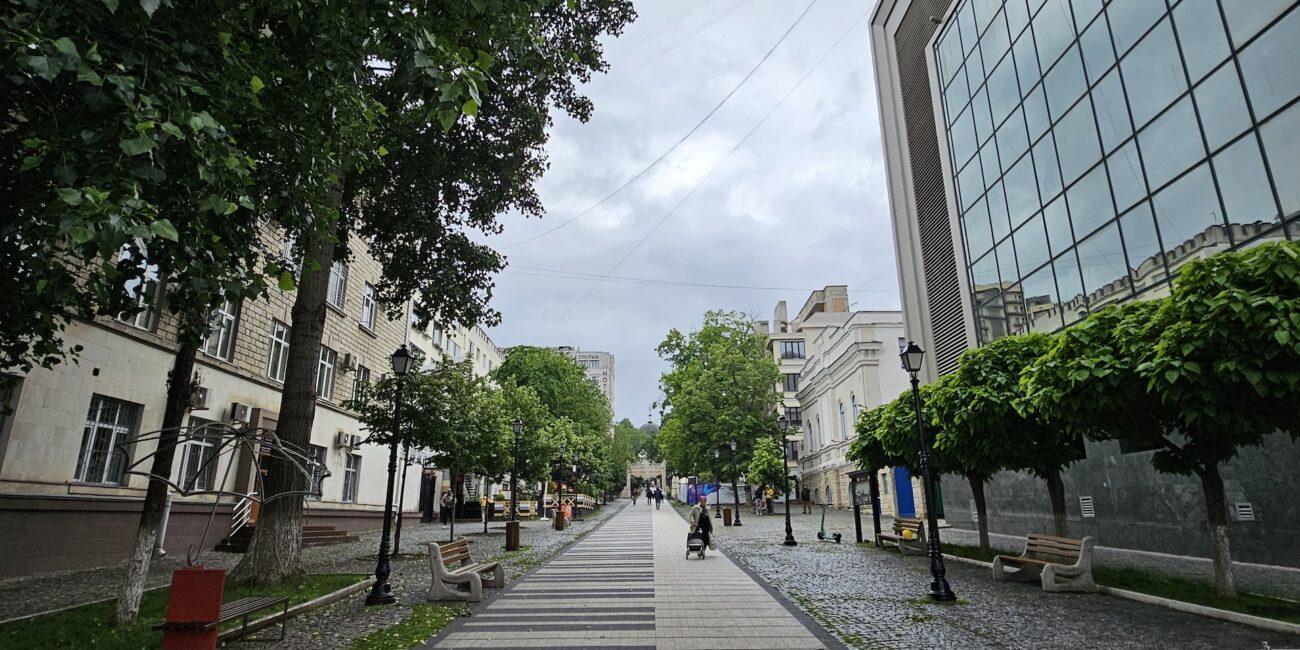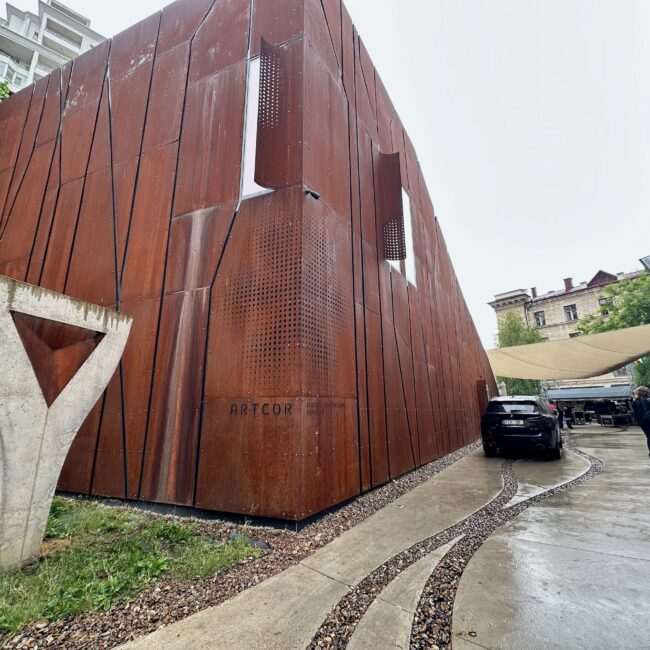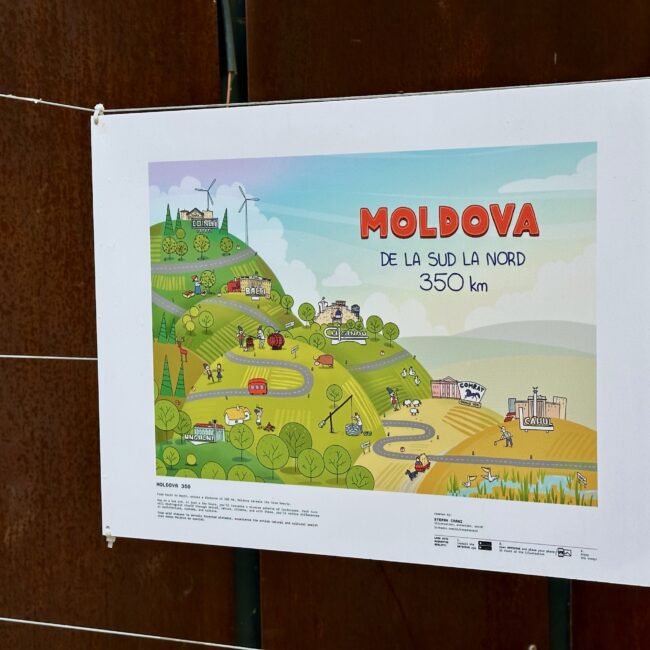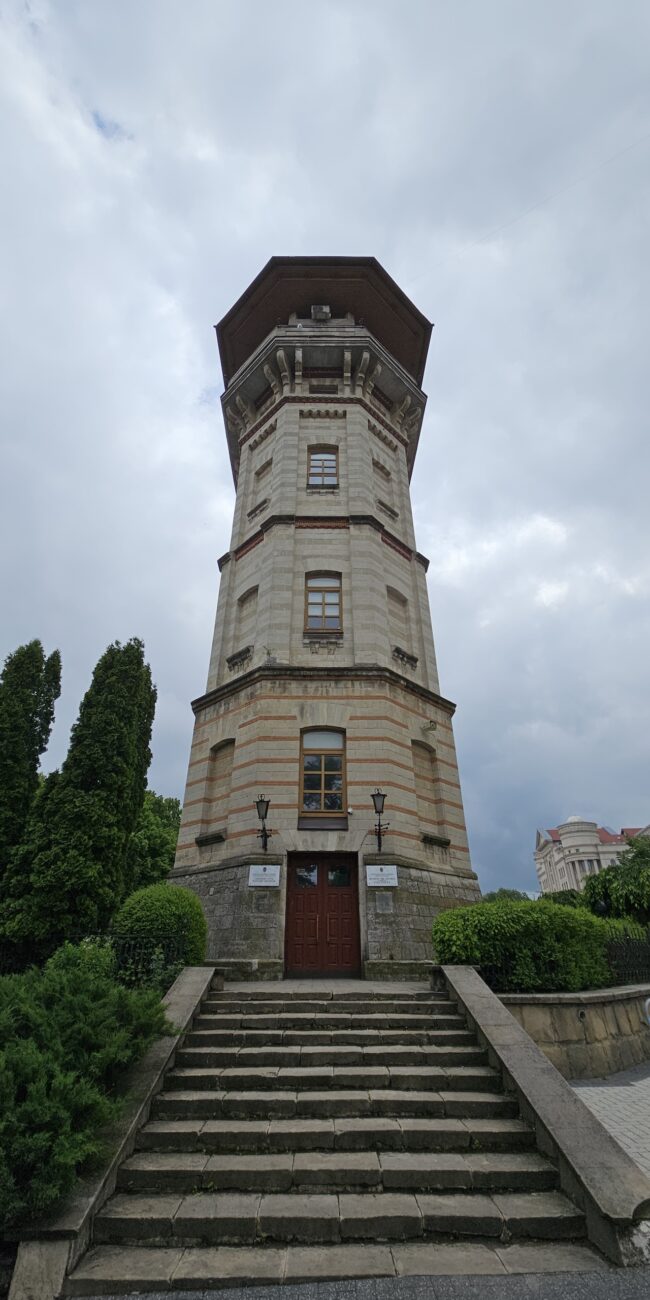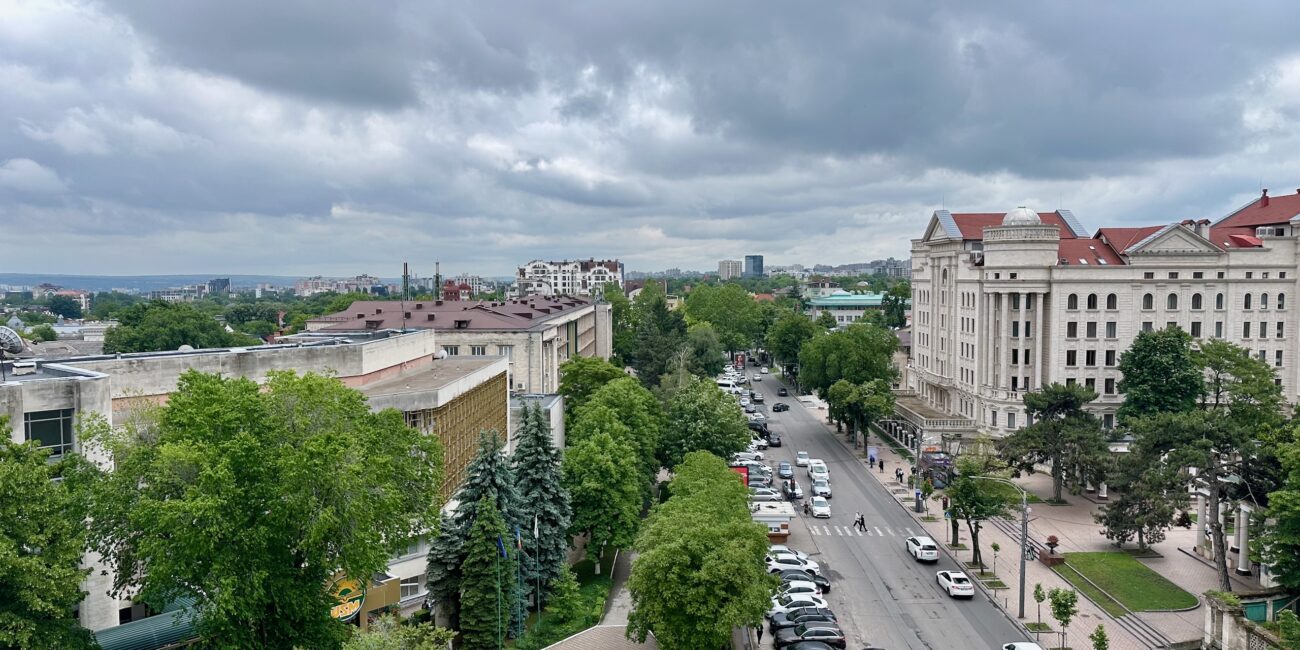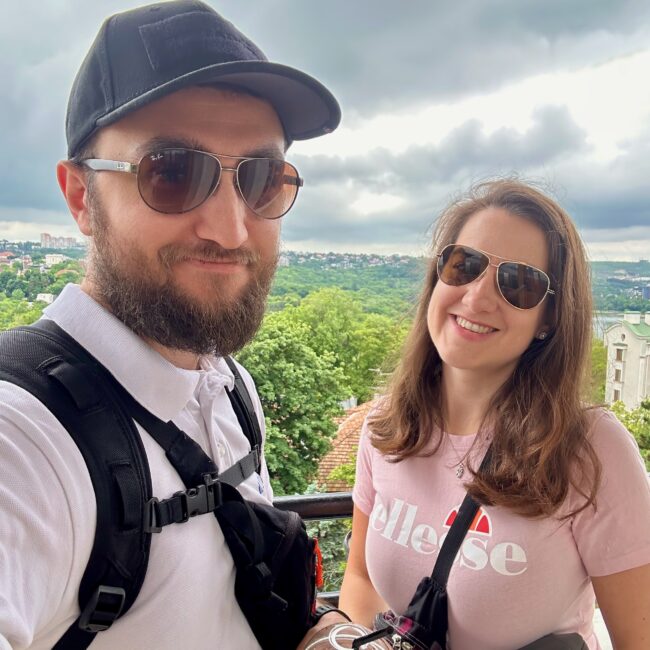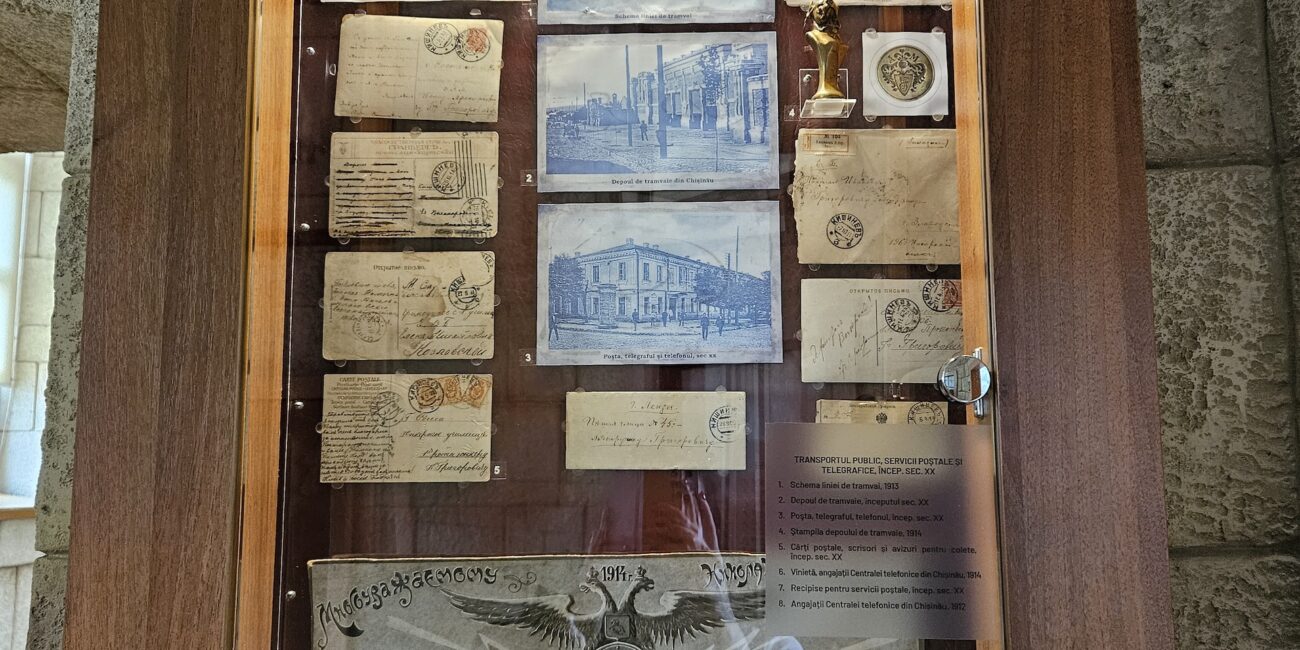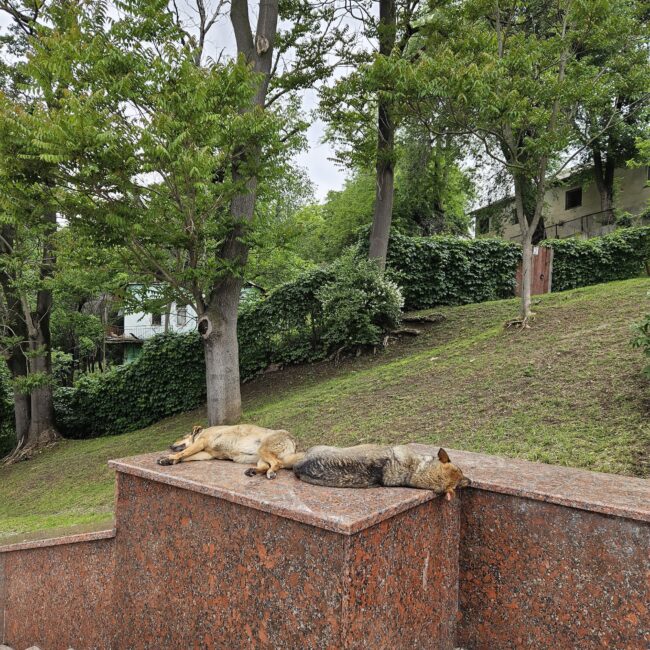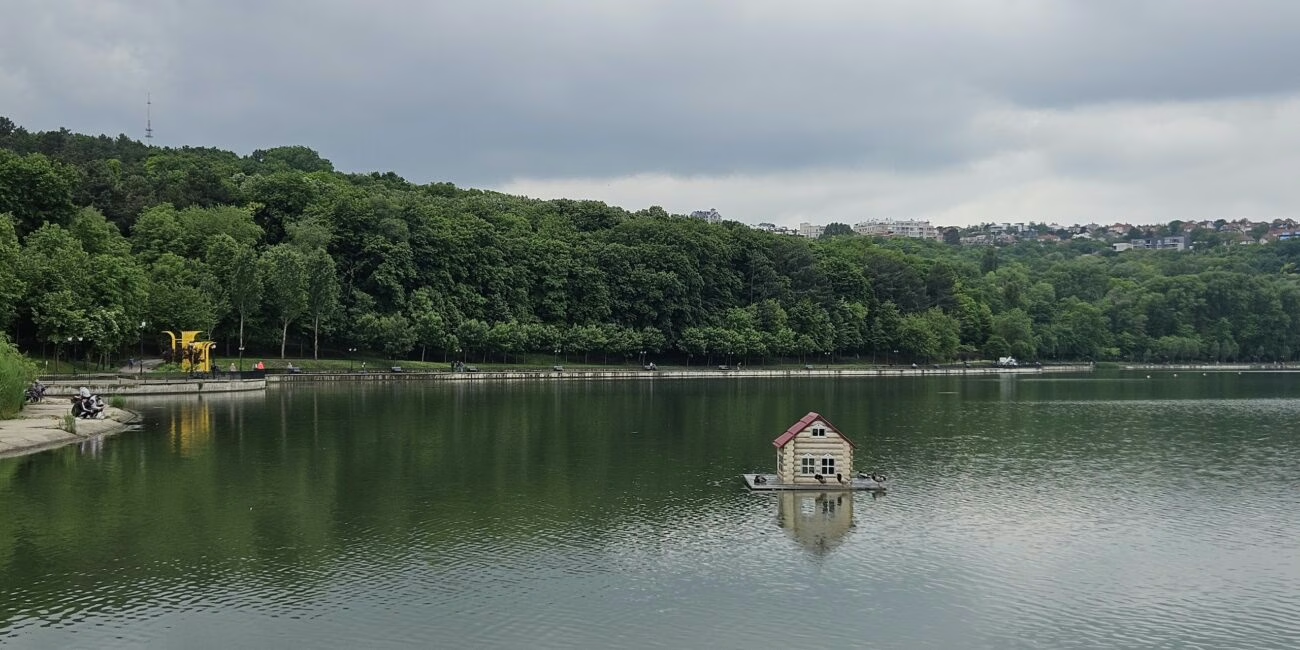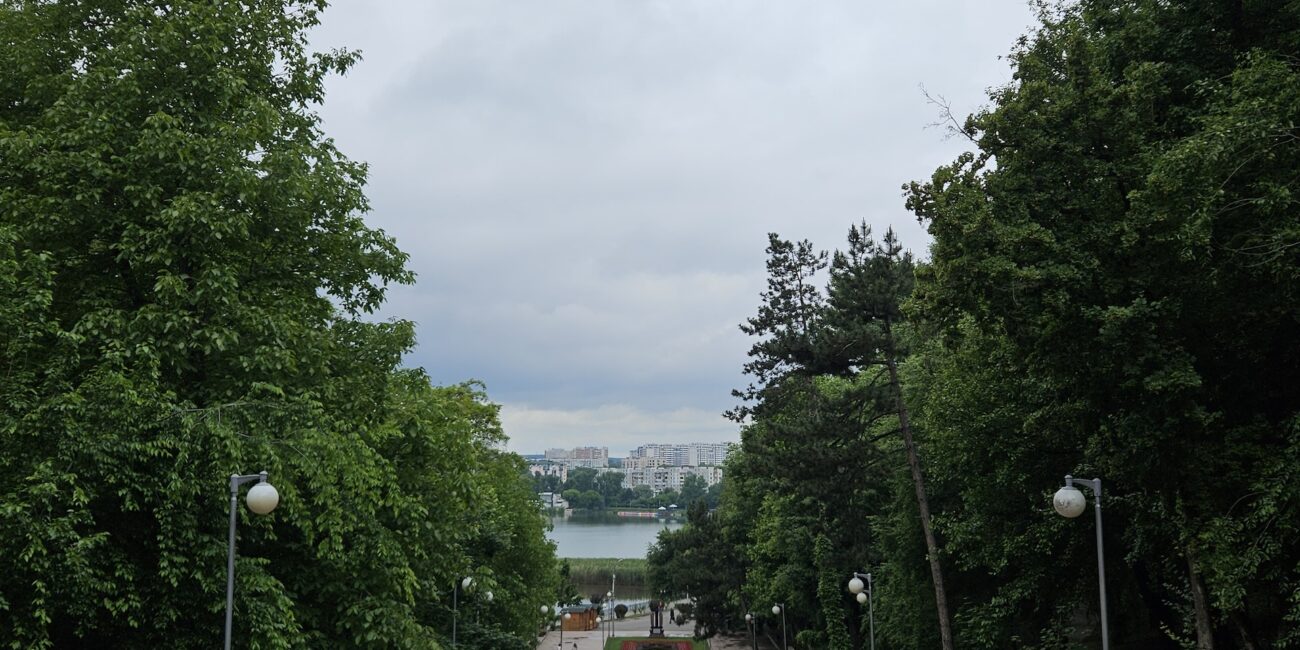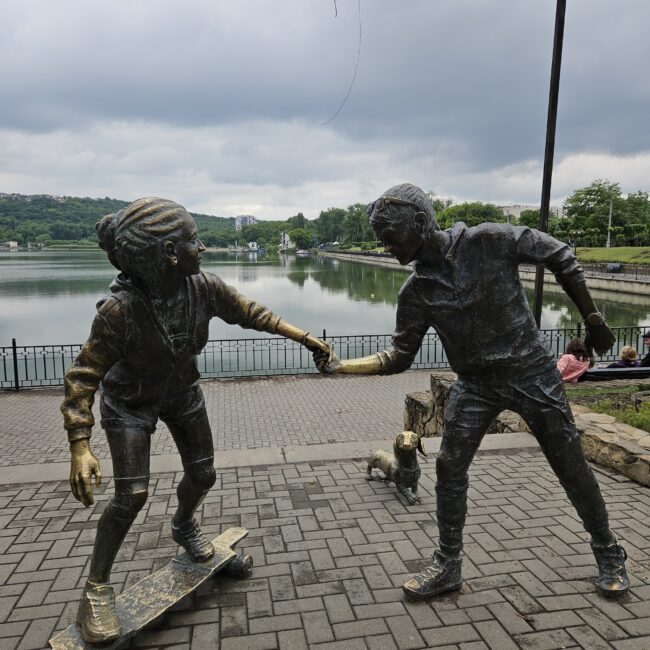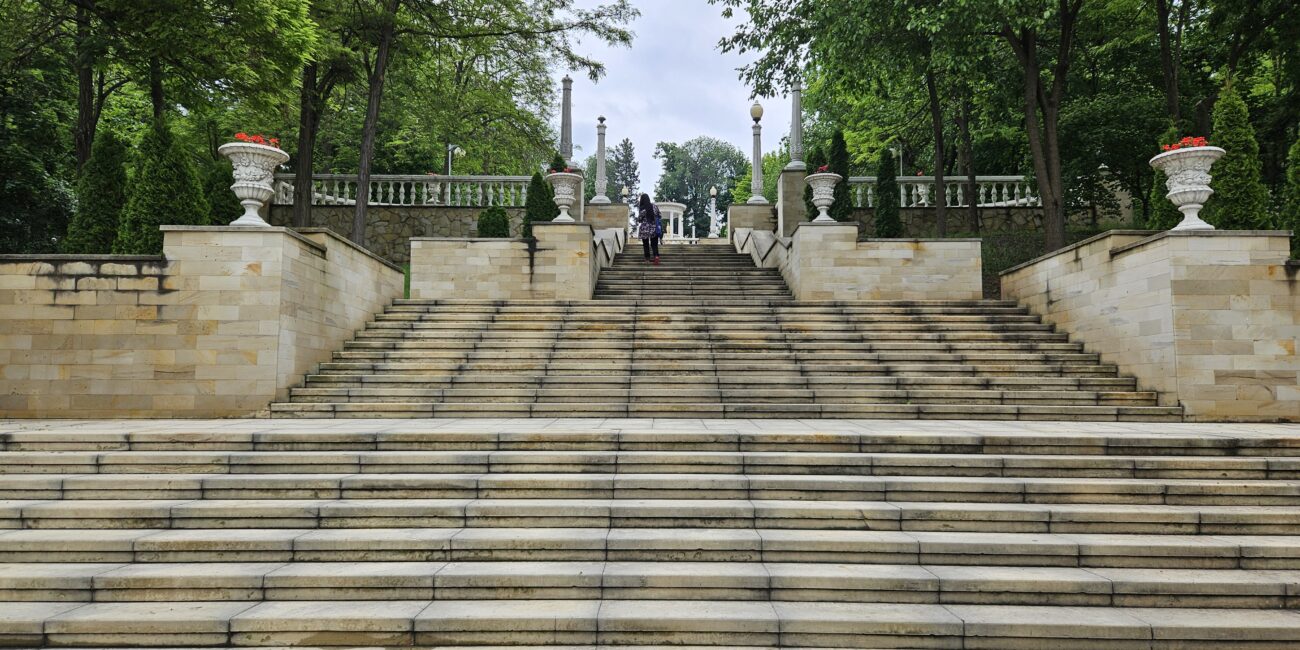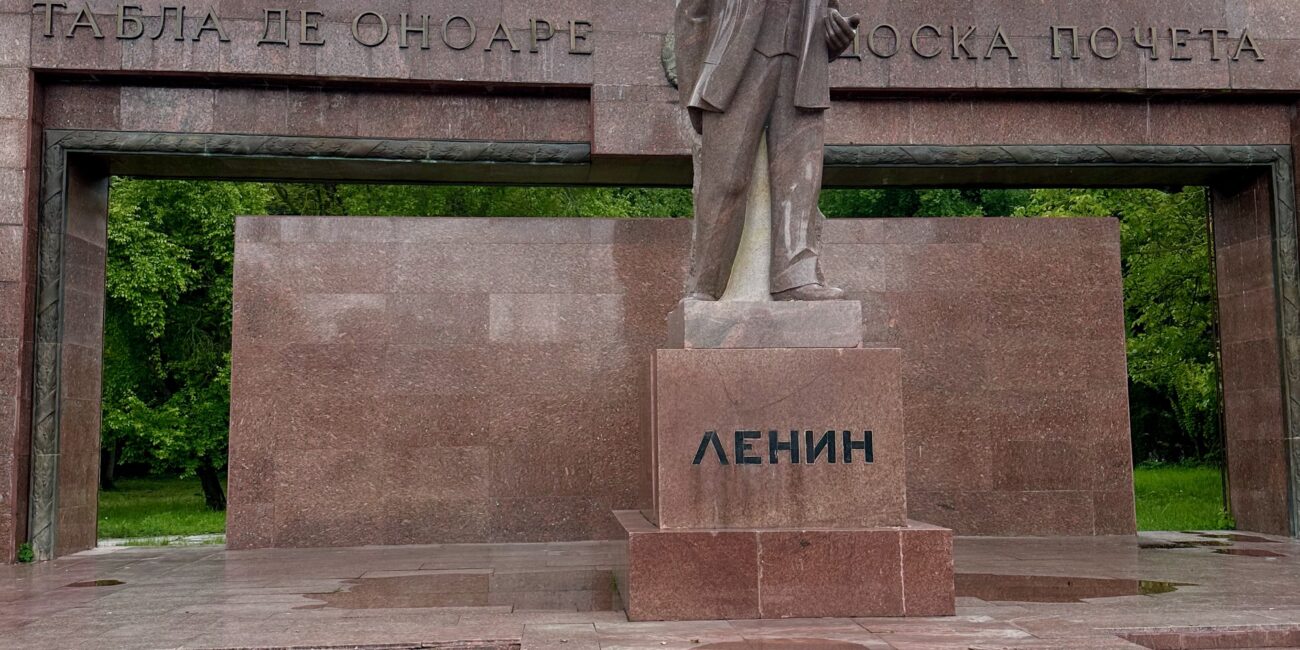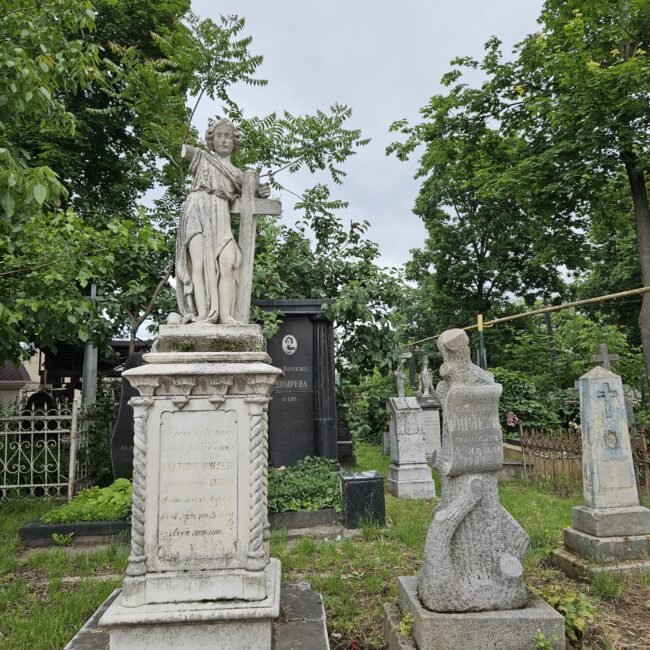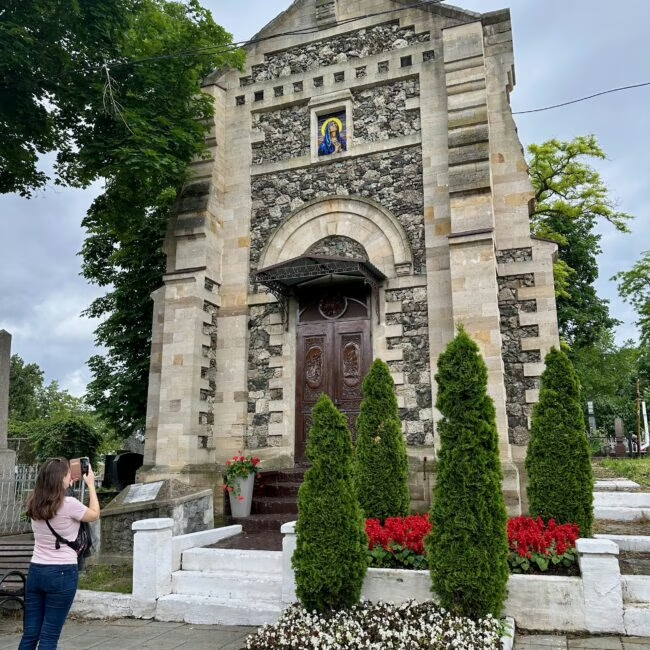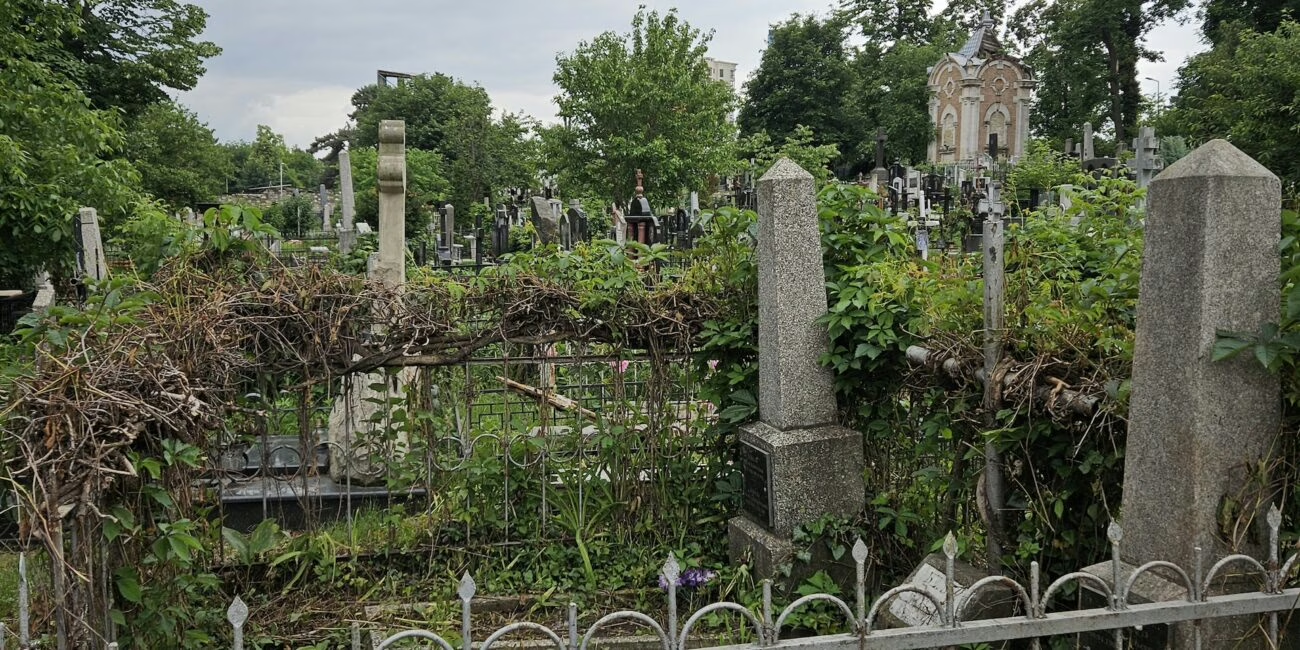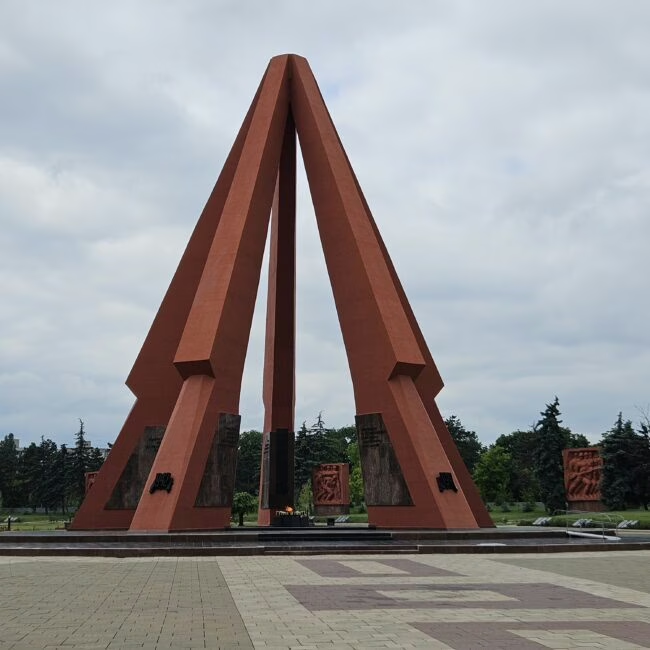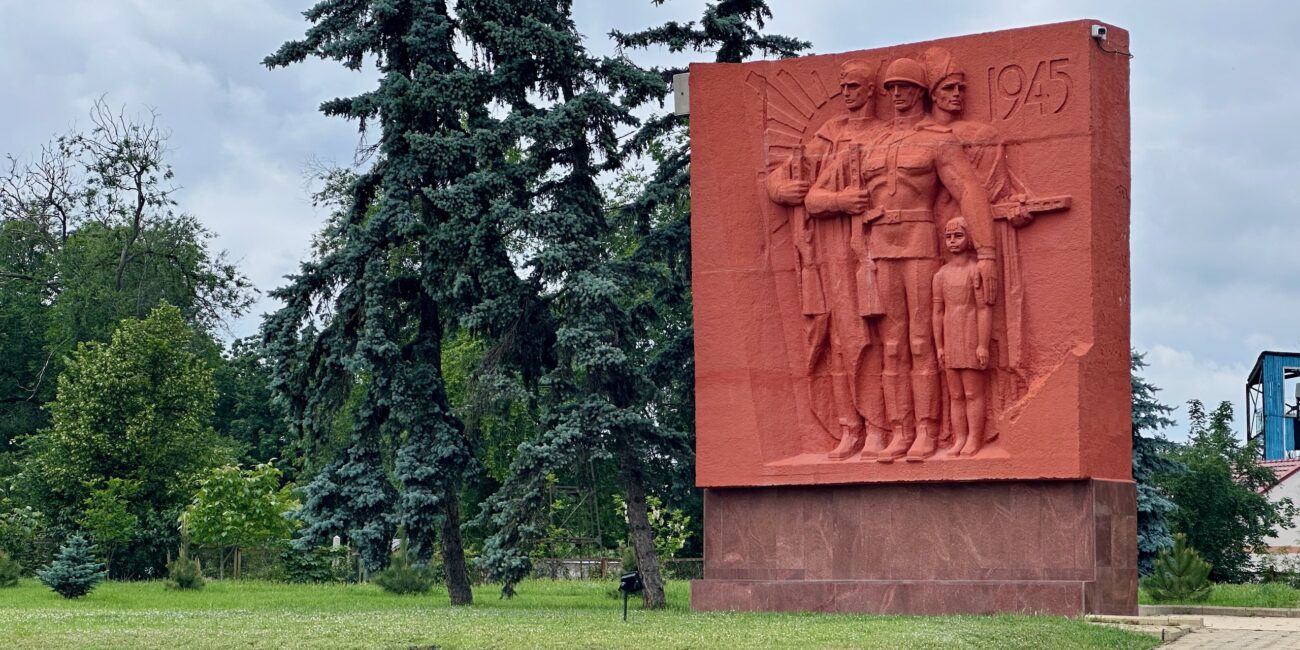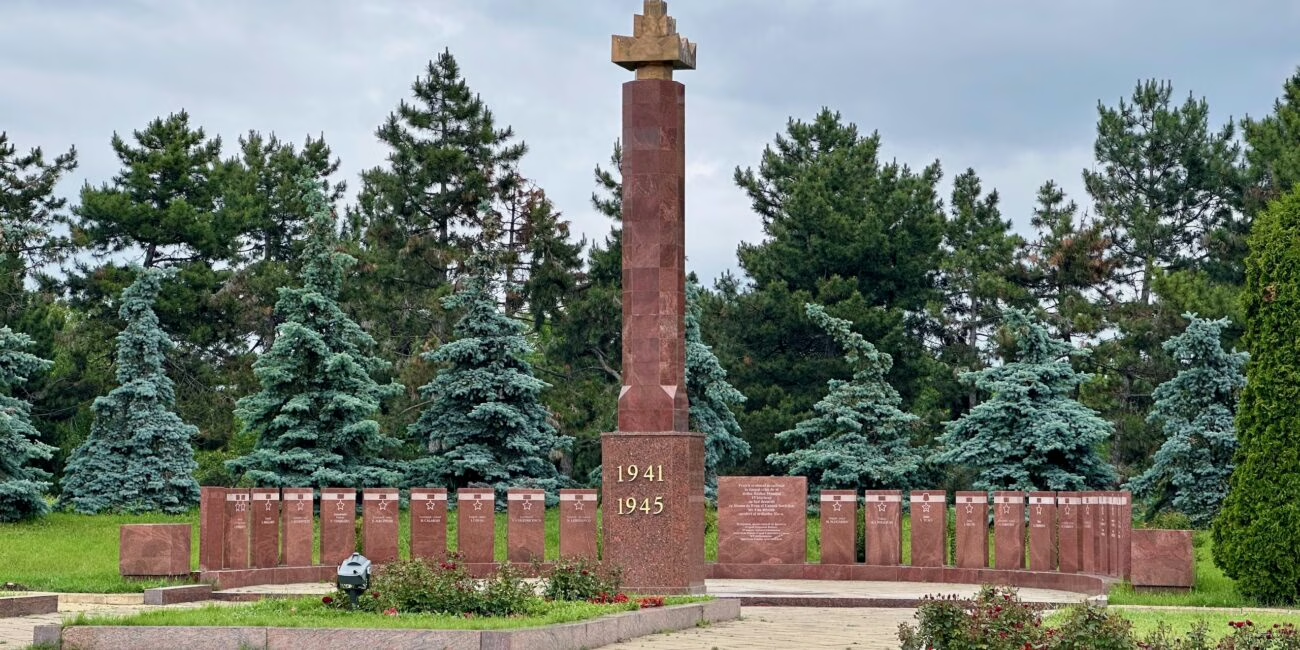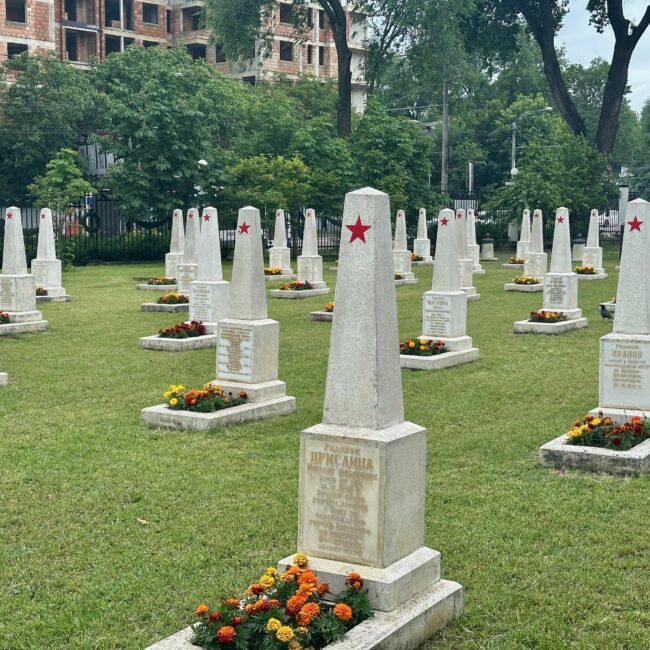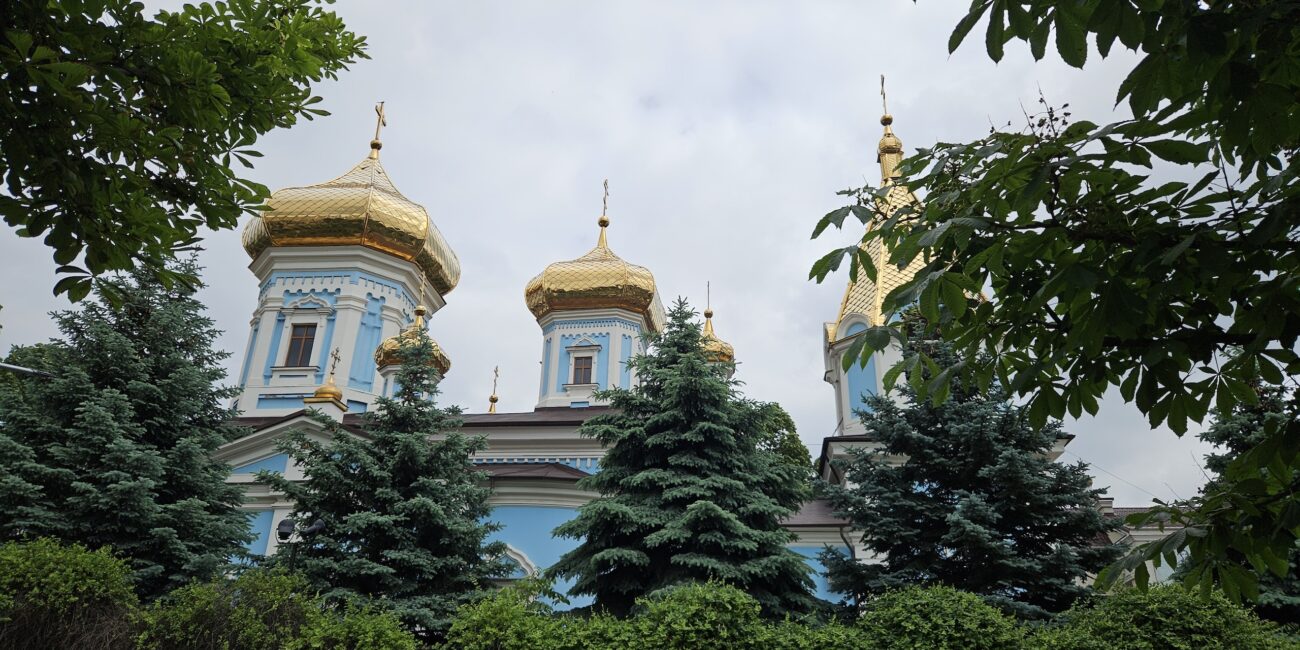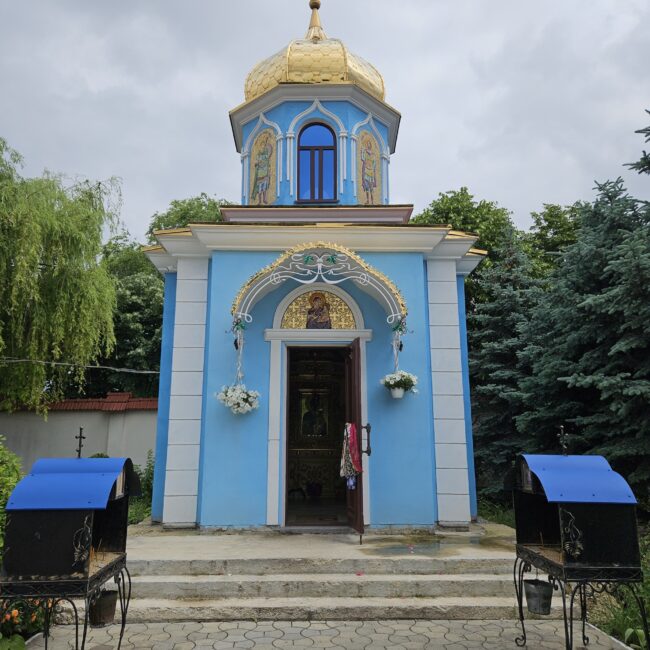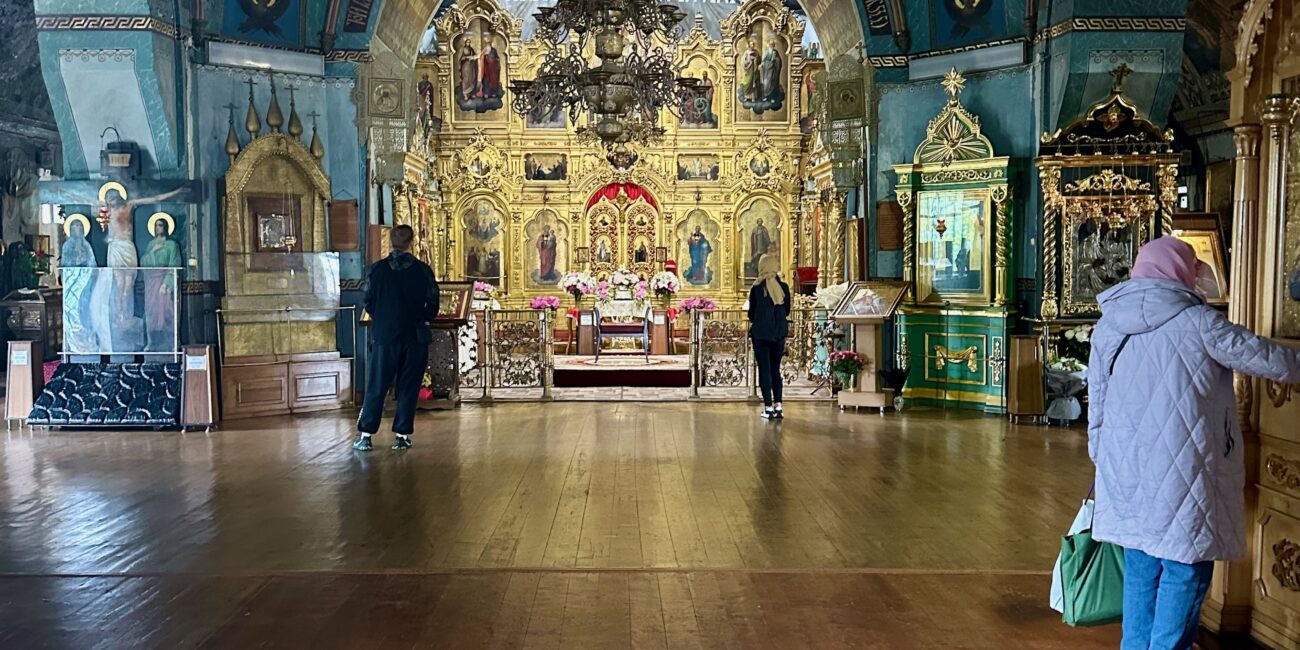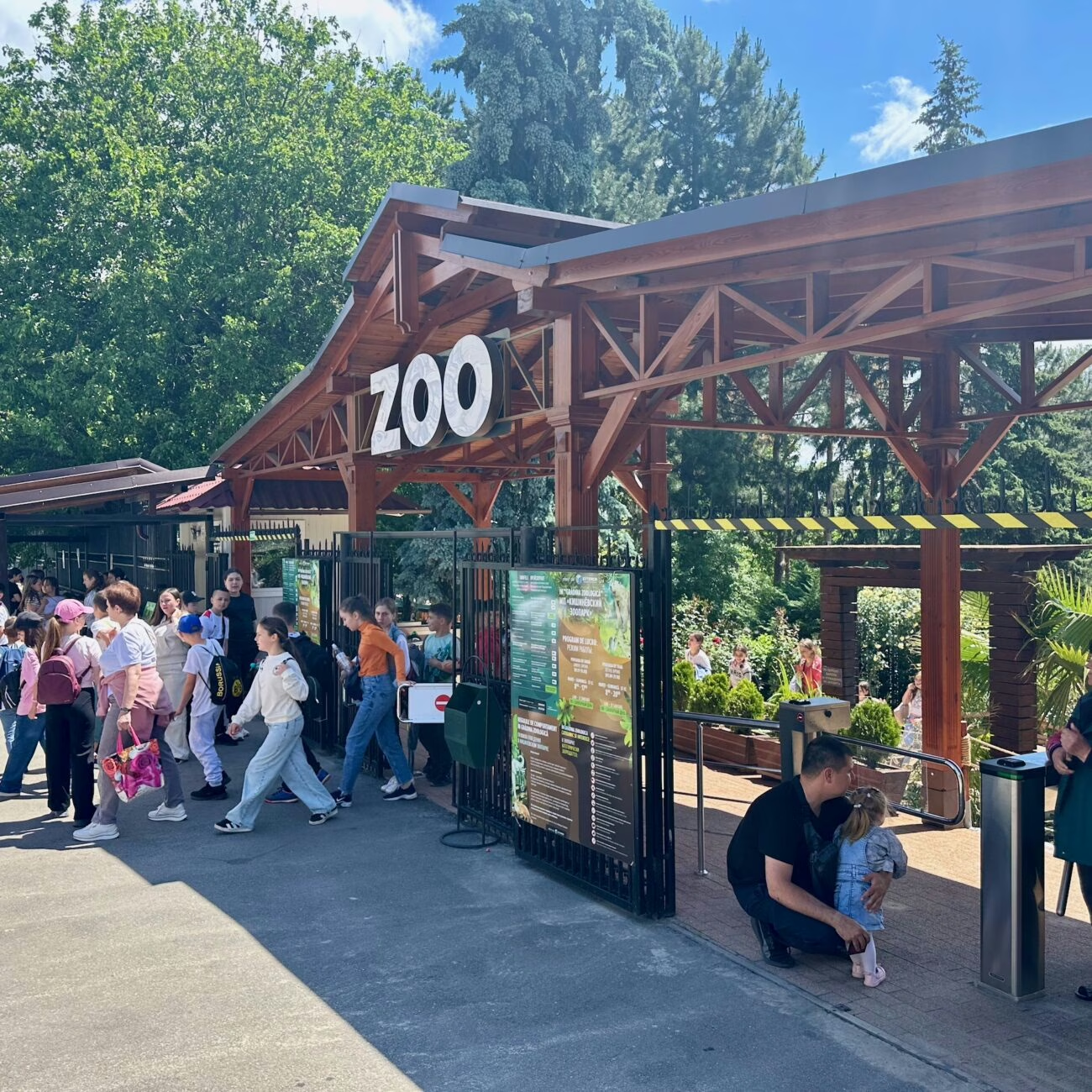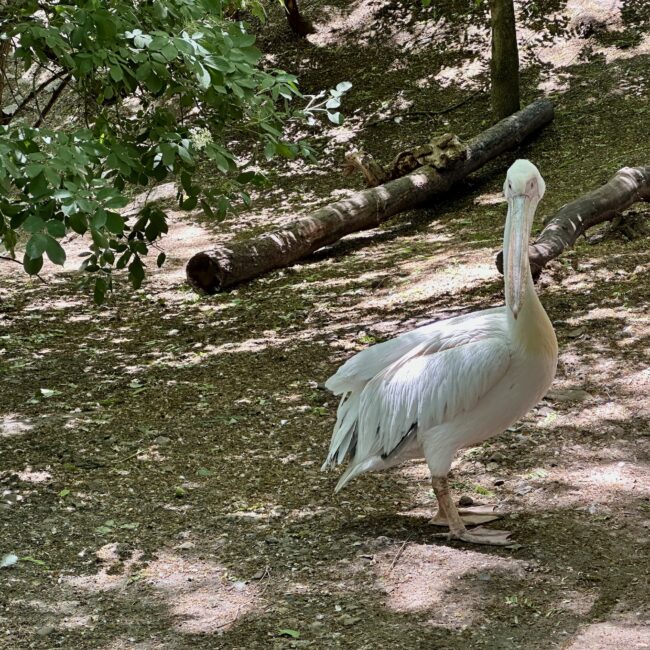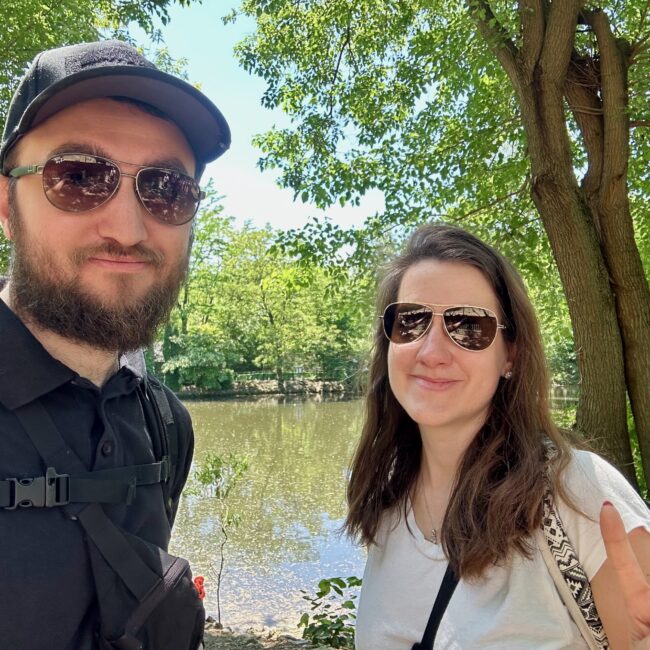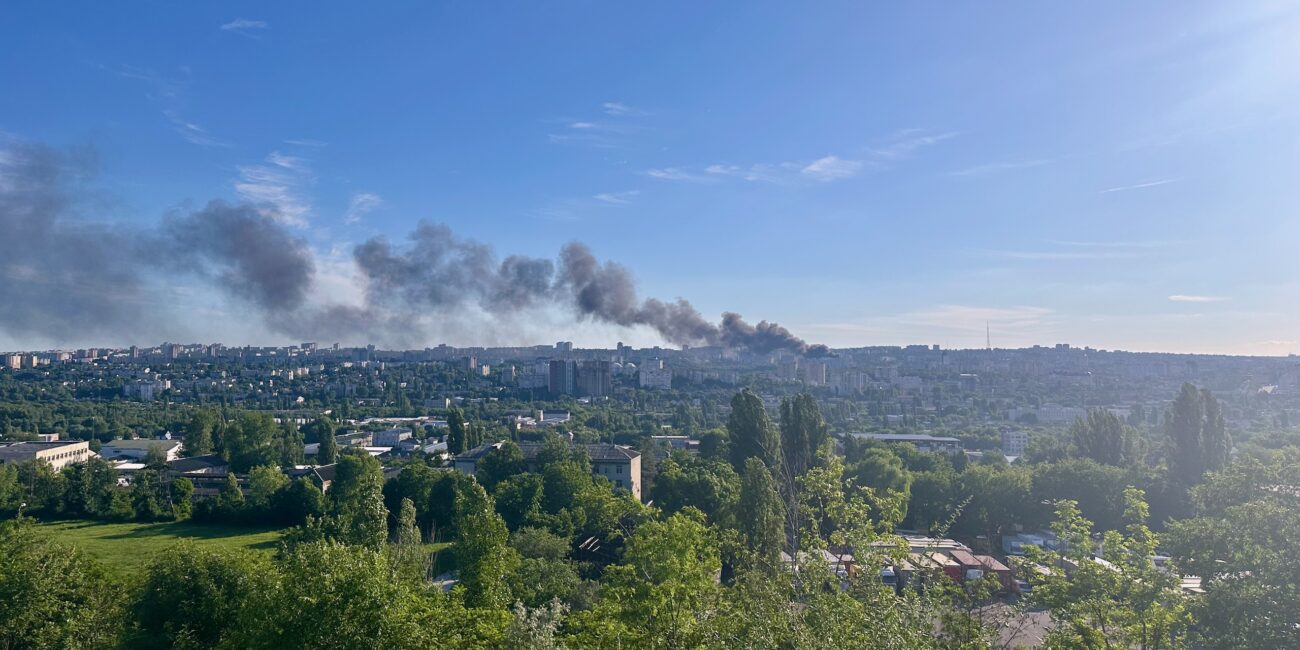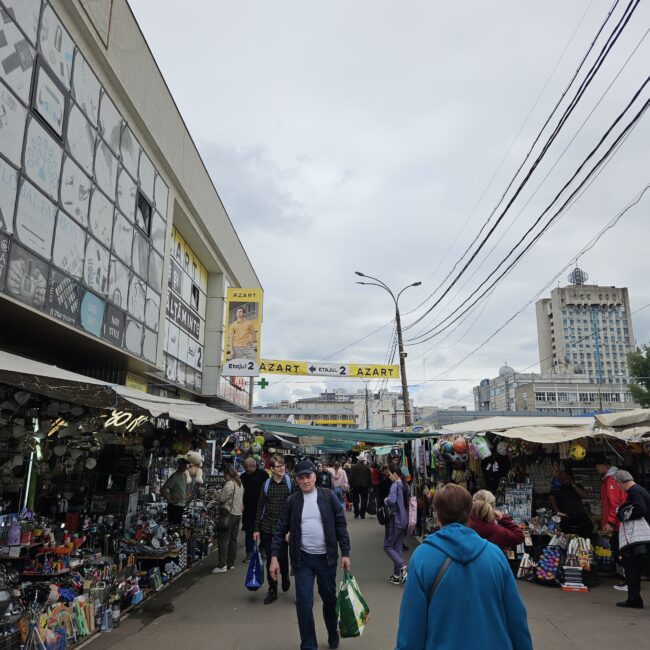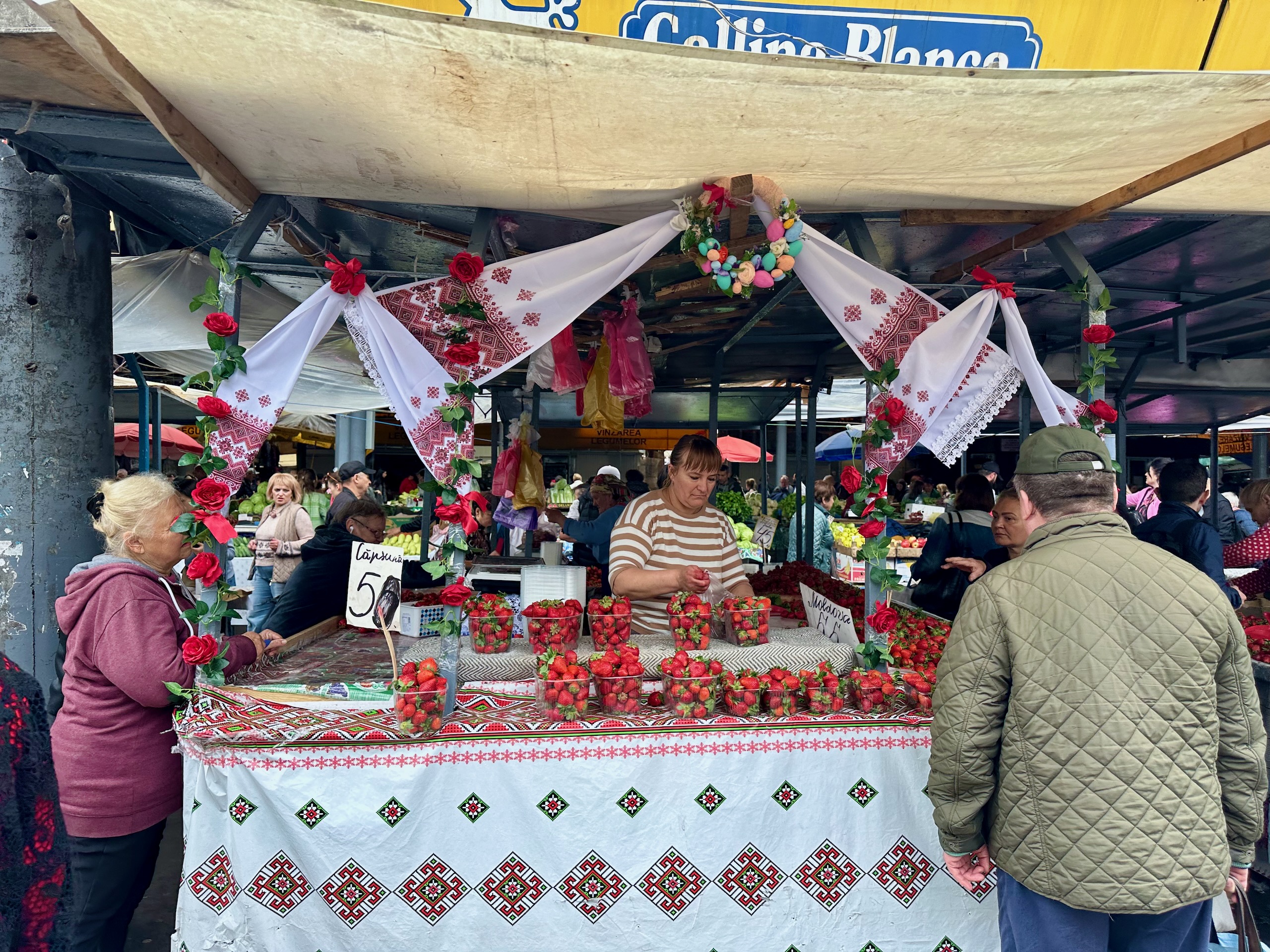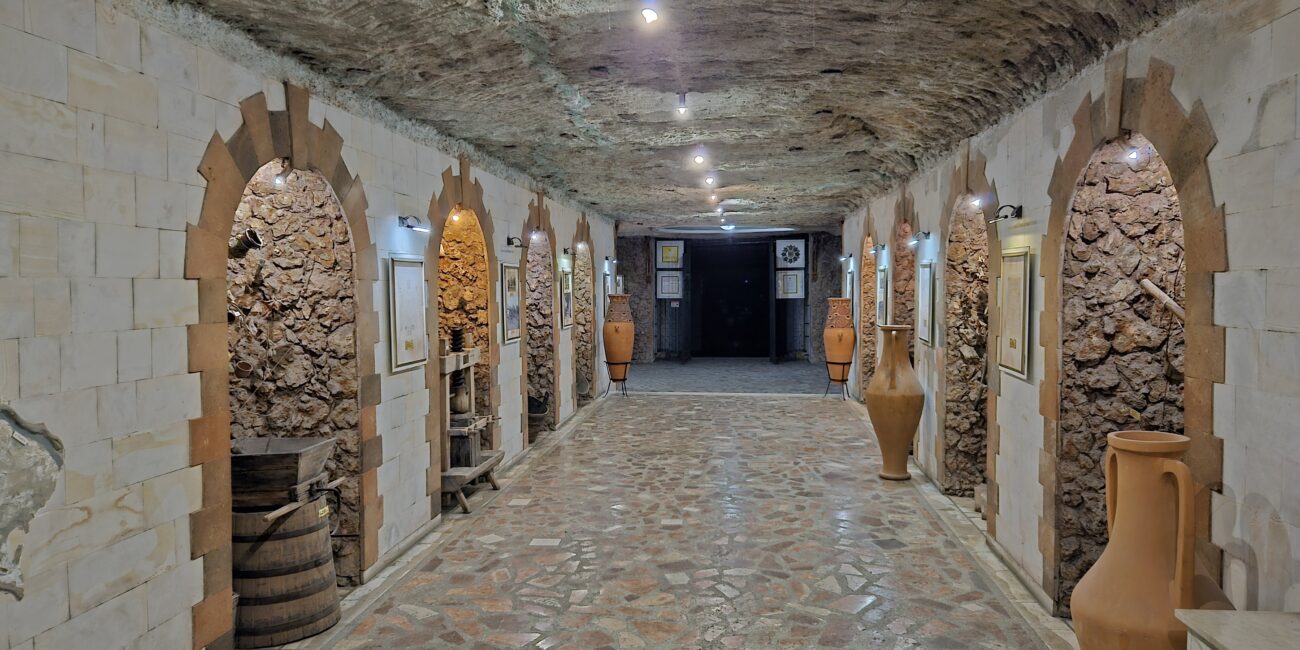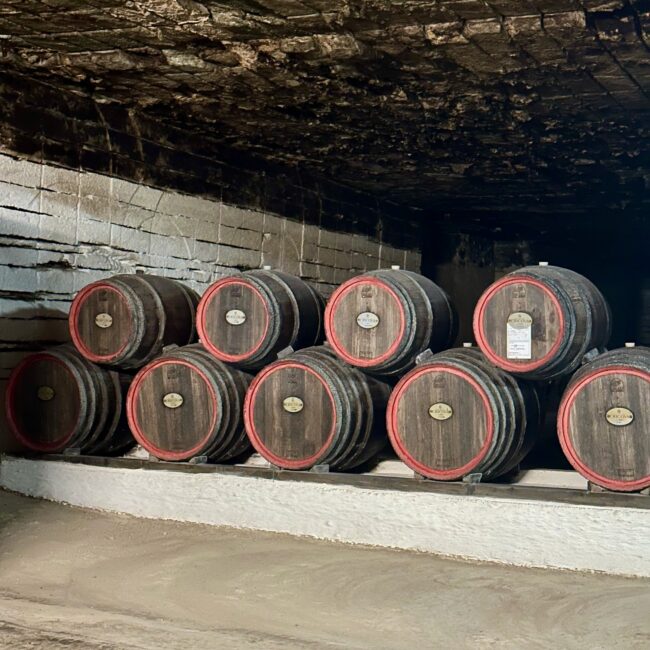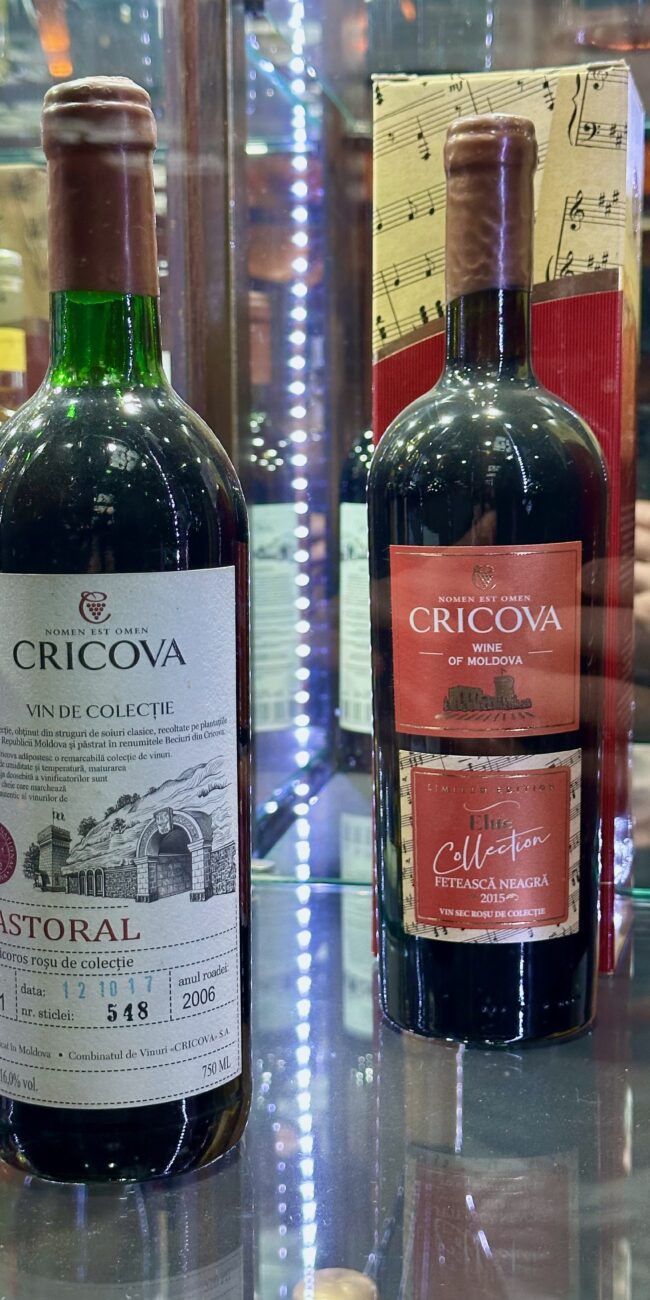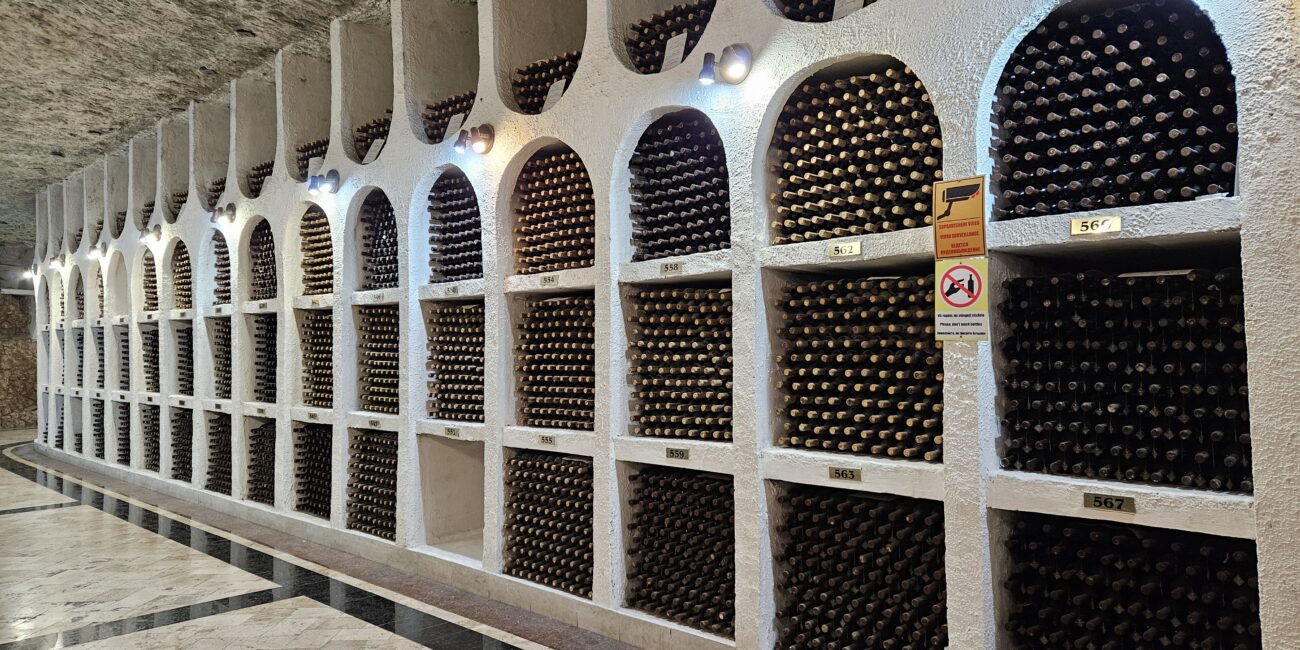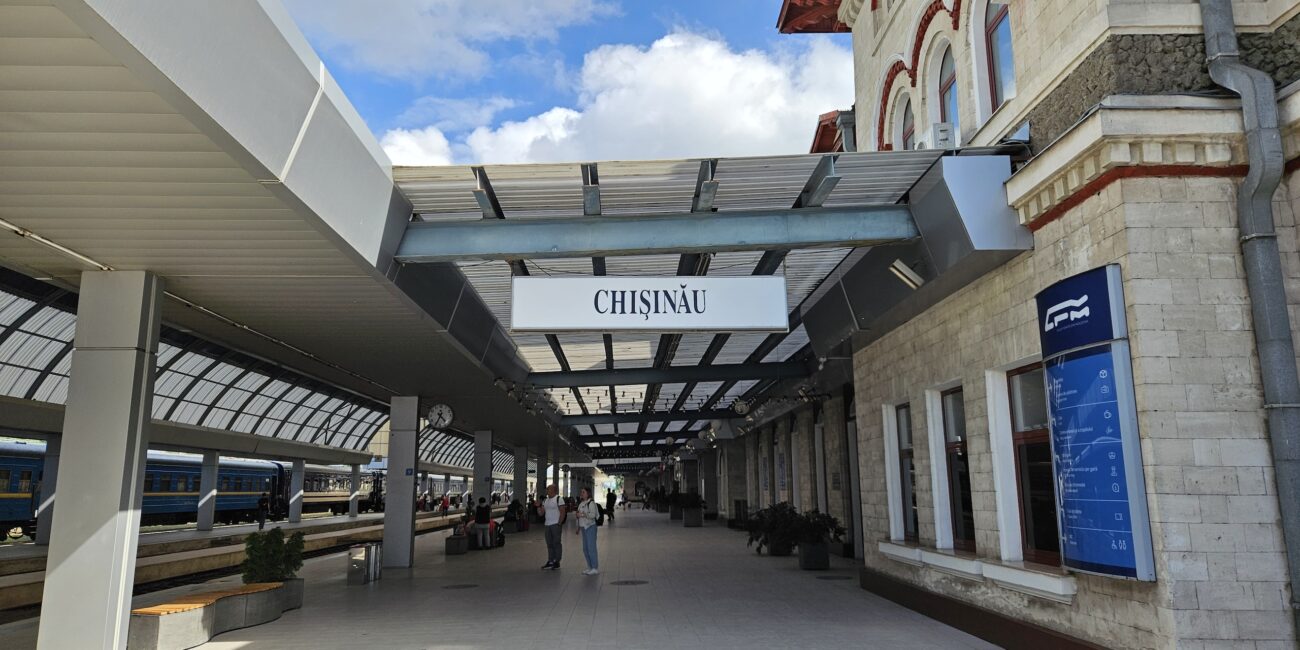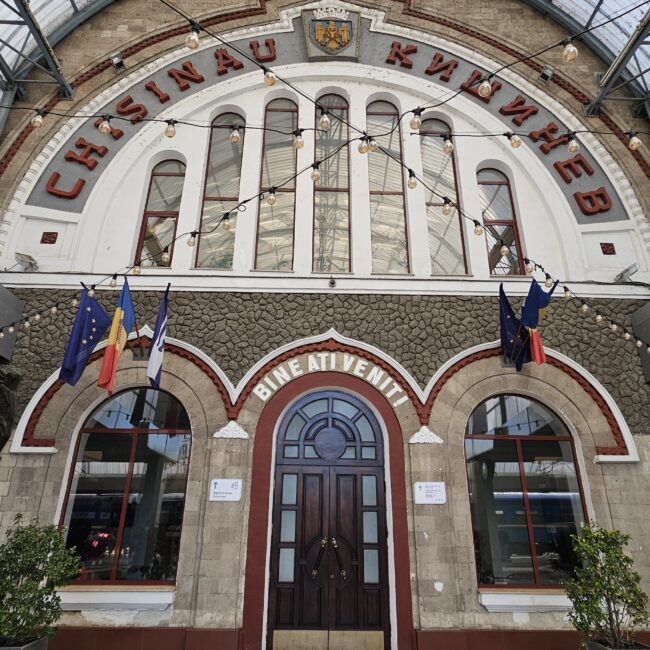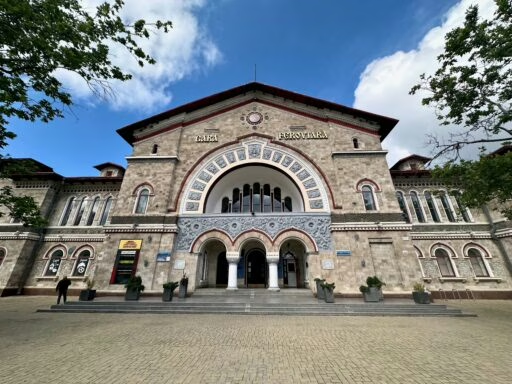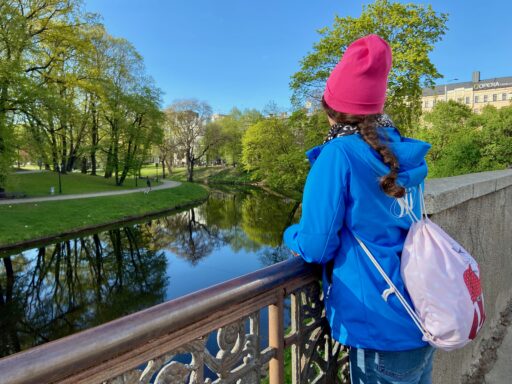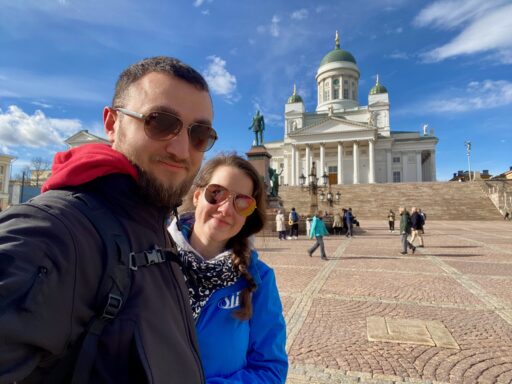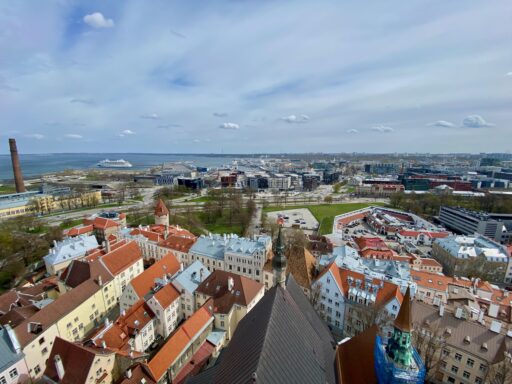This post is also available in:
Polski
Hello! 👋
In this post, we’re focusing on the places we managed to visit during our few days in Chișinău and its surroundings. We’re sharing our honest impressions of specific spots and suggesting what we think is worth adding to your list. You won’t find a Wikipedia-style guide here – just our personal picks and real takeaways.
If you haven’t yet read our travel story from Chișinău, we definitely recommend starting there – just click this link. That post covers our general impressions of Moldova, the vibe of the city, transport, food, and the things that surprised us (in both good and… not-so-good ways 😉).
Triumphal Arch
The first spot we visited in Chișinău was the Triumphal Arch – proudly standing on the city’s main street, right across from the cathedral and the government building. It’s hard to miss: while much smaller than its Parisian counterpart, it still makes an impressive sight. Built between 1840 and 1841, the structure stands 13 meters tall and features classical columns. Inside, there’s a bell cast from Turkish cannons captured during the Russo-Turkish War – a nice little historical detail for those who enjoy that kind of thing. Definitely worth a closer look.
Walking around this area is a great way to start exploring the city – it’s spacious, with only small groups of tourists here and there, and the Arch itself can be easily viewed from all sides without any tickets or queues. It’s simply part of the urban landscape, something you can smoothly include in your stroll through the city center. In the evening, it looks especially nice with subtle lighting highlighting its contours and the clock at the top. It may not be a “must-see of Europe,” but it sets the tone nicely for discovering the rest of Chișinău.
Cathedral of the Nativity
Right next to the Triumphal Arch, in the heart of Cathedral Park, we came across the Nativity Cathedral – a neoclassical church with a dome and columns that really catches the eye, even without trying to impress. It was built between 1830 and 1836, designed by Avraam Melnikov, and today stands as a symbol of resilience. It was damaged during World War II, later turned into an art gallery under Soviet rule, and finally restored to its original glory with the reconstruction of the bell tower in 1997.
If you’re into this kind of place, the interior is definitely worth a look. Beautifully restored, with gold accents, an ornate iconostasis, and vibrant frescoes straight out of classic Orthodox splendor. The best part? Entry is free, and you can take your time exploring (just be respectful if a service is in progress). Women are expected to cover their heads.
What we really liked was that, beyond its symbolic importance and history, the Cathedral is surrounded by greenery – the peaceful Cathedral Park, benches, and a quiet atmosphere. It’s the kind of place where you can sit for a moment and reflect on the fact that you’re in a city that, despite its past and struggles, still carries something uplifting in its spirit.
Monument to St. Stephen the Great
Located right at the entrance to Ștefan cel Mare Central Park, this impressive statue is a must-see on any walk through the city center. We passed by it on our way to the park – in light rain, as it happened.
The monument was erected between 1925 and 1927 and officially unveiled on April 29, 1928. It honors one of Moldova’s greatest medieval rulers, Stephen the Great, who fought against the Ottomans and helped preserve the country’s independence. The statue, created by sculptor Alexandru Plămădeală, was cast from the bronze of captured Turkish cannons.
The statue stands about 5.2 meters tall atop a solid sandstone pedestal measuring around 6 meters, surrounded by the greenery of Ștefan cel Mare Central Park. It’s a natural meeting point—locals often gather here, and tourists snap souvenir photos. Interestingly, the monument has been moved several times throughout history. During the Soviet occupation, for example, it was sent to Romania and later returned to Chișinău.
Eugen Doga Street
This quiet, short street in the very heart of Chișinău has been turned into a pedestrian zone and named after the famous Moldovan composer, Eugen Doga. It’s barely 250 meters long, but has a neat, pleasant look — cobblestones, old-style lanterns, a few trees, some cafés with outdoor seating, and a distinctive sculpture at the entrance: the “Lovers’ Monument”.
We ended up there more or less by accident while walking from Cathedral Square. It was raining at the time, so the street was pretty empty. As for the vibe — it’s calm, nothing flashy. Just a pleasant little spot for a short stroll, where you can sit on a bench or grab something to drink.
It’s not exactly a “wow” attraction, but if you’re nearby, it’s worth stopping by — even if just for a moment.
Artcor
Artcor is a modern creative hub tucked away in the courtyard of the Academy of Fine Arts – a spot that definitely stands out from the more traditional architecture in the center of Chișinău.
From the outside, what immediately catches the eye is the raw concrete and steel structure, with external stairs leading up to a green rooftop terrace. Covering over 800 m², the building was completed in 2019 based on a design by Maksim Calujac and was awarded the BIG SEE Architecture Award in 2020.
Although we didn’t go inside, we could see glimpses of a modern, creative space – workshops, coworking areas, and exhibition zones – all designed to attract young artists, freelancers, and event organizers.
Chisinau City History Museum
Right off Strada Mateevici, you’ll come across the old water tower building – now serving as Chișinău’s City History Museum. From the outside, it might not look too impressive, but the structure itself has a certain charm – a solid brick facade with a bit of character. And inside… well, that’s where it gets interesting.
Some specifics:
- Tickets cost around 50 MDL (about 10 PLN) for adults; students and schoolchildren get a reduced rate of 20 MDL, and kids under 7 can enter for free. Card payments are accepted.
- The building stands 27 meters tall and originally functioned as a water tower before being converted into a city museum following its renovation in 2013.
- An elevator takes you only up to the penultimate level — to reach the viewing platform, you’ll need to climb a set of spiral stairs. At the top, you’re rewarded with a panoramic view of the city center and the surrounding greenery.
- Inside, you’ll find a permanent exhibition showcasing the city’s development since the 15th century. Just a heads-up: all descriptions are only in Russian or Romanian — there’s no English signage, unfortunately.
Valea Morilor Park
If you feel like venturing beyond the Triumphal Arch and Cathedral, Valea Morilor Park makes for a pleasant next stop — and it’s within walking distance.
The park was originally established in 1950 as the “Central Park of Culture and Leisure of the Leninist Komsomol,” designed by architect Robert Kurz. It features water elements and scenic cascades. Covering 114 hectares in total, the park includes a large artificial lake spanning about 34 hectares. One of its most striking features is the Cascade Stairs — rebuilt in 2016 and boasting 218 steps — which now serve as the park’s signature landmark. Interestingly, they even rise higher than the famous Potemkin Stairs in Odesa.
The park also features the “Green Theater” amphitheater, a small pier, and a boat rental area. In summer, a sandy beach appears along the lake’s shore, turning the space into a popular local hangout. It’s a place where you can really feel the city breathe – families strolling, couples relaxing, kids running around – the whole area comes to life.
Cascade Stairs
If you’re looking to soak up some greenery close to the city center, the Cascade Stairs in Valea Morilor Park are hard to miss. This impressive series of terraces, fountains, and small waterfalls climbs up toward scenic viewpoints over the lake. Fully restored and refreshingly free to access, the spot offers a calm, urban escape – perfect for a relaxed stroll or a photo break with a view.
The stairs consist of around 292 steps arranged in a terraced layout, complete with seating areas and lighting that creates a pleasant atmosphere in the evening. The park itself was originally designed in the 1950s, and the cascades, along with the surrounding greenery, were given a fresh look during a major renovation in 2016. Thanks to that revitalization, the entire area feels well-kept and inviting, even decades after its initial construction.
Lenin monument
On the far side of Valea Morilor Park, tucked between the Expo grounds and quiet park pathways, you’ll come across the Lenin monument — a rather unexpected and, well… let’s just say, not the most impressive piece of art. If you’re wandering around the park, you’ll likely stumble upon it by chance, as it’s not marked prominently and requires a short detour down a side path.
The statue was originally unveiled in 1949 in front of the Council of Ministers building, but after the fall of the Soviet Union in 1991, it was relocated to Valea Morilor Park, where it still stands today. However, time hasn’t been kind — parts of the pedestal are damaged, and the monument as a whole gives off the impression of having been left to quietly fade away.
Armenian Cemetery in Chisinau
After our visit to the Lenin monument, we hopped on a trolleybus and made our way to the Armenian Cemetery – a type of place we often like to explore when traveling abroad. Cemeteries like this offer a unique glimpse into local history and atmosphere, far from the typical tourist routes.
It’s one of the oldest and largest cemeteries in Chișinău, located on Alexei Mateevici Street, covering an area of about 10 hectares. Its origins date back to 1811, and at its heart stands the Chapel of All Saints, built in 1818. Many of the tombstones feature unique stone carvings and etched portraits of the deceased, offering a striking and deeply personal insight into the local culture and history.
We didn’t go inside the chapel, as it was closed during our visit. The cemetery is usually open to the public without any entrance fee, and you can quietly wander through its alleys. It’s not your typical tourist attraction – you won’t see crowds here – but it’s worth a visit to get a sense of how local communities express remembrance and faith.
Memorial complex “Eternity”
This place truly leaves an impression – a massive, symbolic memorial complex dedicated to Soviet soldiers who died during the Jassy–Kishinev offensive in 1944. The monument was unveiled on May 9, 1975, marking the 30th anniversary of the victory in the Great Patriotic War, and underwent renovation in 2006.
At the center of the complex stands a striking 25-meter pyramid formed by five stylized bayonets – each representing one year of the war from 1941 to 1945. At its base burns an eternal flame set within a pentagonal star – the visual and emotional heart of the memorial. From this point, marble alleys with engraved names of fallen soldiers extend outward, while stone reliefs near the entrance depict symbolic wartime scenes. The atmosphere is solemn, yet not overly pompous – it feels respectful and dignified.
The complex is surrounded by well-maintained greenery, with a spacious plaza integrated into the landscape. Entrance is free of charge.
Monaster Ciuflea
Located not far from the Atrium shopping mall and the central railway station, we came across the Ciuflea Monastery – the only active women’s convent in Chișinău. Built in 1858 by the Ciufli brothers, the monastery features an eclectic white-and-blue structure topped with nine gilded domes that instantly catch the eye.
Entry is free, but it’s important to dress appropriately: women are expected to wear headscarves, and clothing should cover shoulders and knees. Inside, you’ll find the preserved tombs of the founders — Teodor and Anastasie Ciufli — which adds a mystical, almost sacred feel to the atmosphere.
Chisinau Zoo
We visited the zoo more out of curiosity than excitement — since we were nearby, we figured we’d check it out. While it holds a decent Google rating (around 4.6/5), we’d say that’s a bit generous. The enclosures felt rather small, some animals looked rather subdued, and the overall vibe was a bit outdated. The zoo has been around since 1978 and spans 25 hectares. According to official stats, it houses over a thousand animals from various species — but don’t expect a “wow” factor. On the bright side, ticket prices are very budget-friendly: just 30 lei (a little over €1), and entry is free for kids under 7 and visitors with disabilities. You can pay by card, which is always convenient.
Getting there is easy — you can reach the zoo by bus or trolleybus without any hassle. For us, the visit served more as a short break than a major sightseeing highlight — more of a relaxed stroll than a deep dive into exhibits.
Otovasca Panorama
On our last day, before catching the evening flight, we decided to see if we could find a better viewpoint over the city — and that’s how we ended up at Panorama Otovasca. It’s easy to get here by trolleybus (get off at the str. Meșterul Manole stop), followed by a short walk to a peaceful, ticket-free spot with no crowds.
From the top, you get a wide view over Chișinău – with modern apartment blocks, main roads, and lots of greenery in between. We even spotted a thick plume of dark smoke on the horizon, as something happened to be on fire that day. It’s more of an “urban overlook” than a classic scenic viewpoint, but if you’ve got some time to kill before your flight, it’s definitely worth the short detour.
Piata Centrala
If you remember the market vibes of Warsaw’s old Stadion Dziesięciolecia or open-air bazaars in smaller towns — this will feel like a trip back in time. Piața Centrală is the largest and most authentic market in Chișinău, operating since the 19th century. From the outside, it looks just like you’d expect: no tourist gloss, just real local hustle — piles of fruits, vegetables, meats, cheeses, clothes, and random odds and ends. Everyone can find something different here.
We stepped in more out of curiosity than a real shopping need. What struck us immediately was how authentic the place felt — crowds of locals bargaining between stalls, the scent of pickled vegetables and warm bread in the air.
It’s definitely not an Instagram-friendly tourist spot, but rather a place that sparks a bit of nostalgia — like stepping back into the ’90s, to a market that doesn’t try to put on a show. It’s worth stopping by, even briefly, to get a feel for how locals live, trade, and experience a slice of everyday Moldovan life.
Cricova Wine Cellars
One of the most memorable highlights of our trip was the tour through the underground wine world of Cricova. The visit lasted about an hour and a half and took us through a labyrinth of tunnels, endless shelves lined with thousands of bottles, and elegant tasting halls. You can’t just show up — tours must be booked in advance for a specific time slot. Guided tours are available in Romanian, English, or Russian.
Cricova isn’t just a wine cellar – it’s practically an underground city, built within former limestone mines. Since 1952, it has operated as one of the largest attractions of its kind in the world. Its cool, dimly lit tunnels house around 1.3 million bottles of wine – ranging from rare vintages like a bottle from 1902, to collections associated with prominent figures such as Angela Merkel or Vladimir Putin. Some of these wines were gifted or left behind during diplomatic visits.
The tunnel system stretches for about 120 kilometers, though a significant portion serves purely as storage. Inside, the temperature remains constant throughout the year at 12–14°C, with humidity levels reaching 97–98% – perfect conditions for aging sparkling wines made using the traditional method. And it’s true – even though it was warm outside, we were glad to have brought a sweatshirt for the tour.
We paid around 90 PLN per person for the guided tour with wine tasting. Payment by card was no problem at all, which was definitely a plus.
You can get to Cricova from Chișinău by taking bus number 2 – the ticket costs just 6 lei (around 1.30 PLN). From the bus stop, it’s about a 15-minute walk to the entrance, but the walk itself is quite pleasant.
Chisinau Railway Station
The Chișinău railway station is more than just a beautiful historic building — it’s almost like a time machine. The first wooden facilities appeared in the 1870s, and the current brick structure was built later that decade. It features a charming large arched entrance, columns, and a classic brick façade. The station saw its first train depart in August 1871, connecting Chișinău with Odessa.
Today, it’s a quiet place that gives a strong sense of déjà vu—especially if you remember the area around Warsaw’s Zachodnia station a few decades ago. The station building itself is a pretty impressive historic structure from the Tsarist era, but step just a few meters beyond the platforms and reality sets in. The surroundings are quite rundown, with an atmosphere that doesn’t exactly invite leisurely strolls. There are a few street vendors, some shady characters, and an overwhelming sense of chaos — in short, it’s a place better visited during the day and with a specific purpose, rather than out of tourist curiosity.
Summary
Chișinău may not shine brightly on Europe’s tourist hotspot map, but that’s exactly where its charm lies. You won’t find crowds of tourists with guidebooks in hand, selfie sticks by every fountain, or sky-high prices for a simple coffee. Instead, you get something authentic — a blend of post-Soviet atmosphere, quiet hospitality, and a handful of places that genuinely surprise. It’s a city that doesn’t try to be trendy — it simply is. Would we go back? Probably not for more sightseeing, but definitely for a glass of Cricova wine — very likely.


